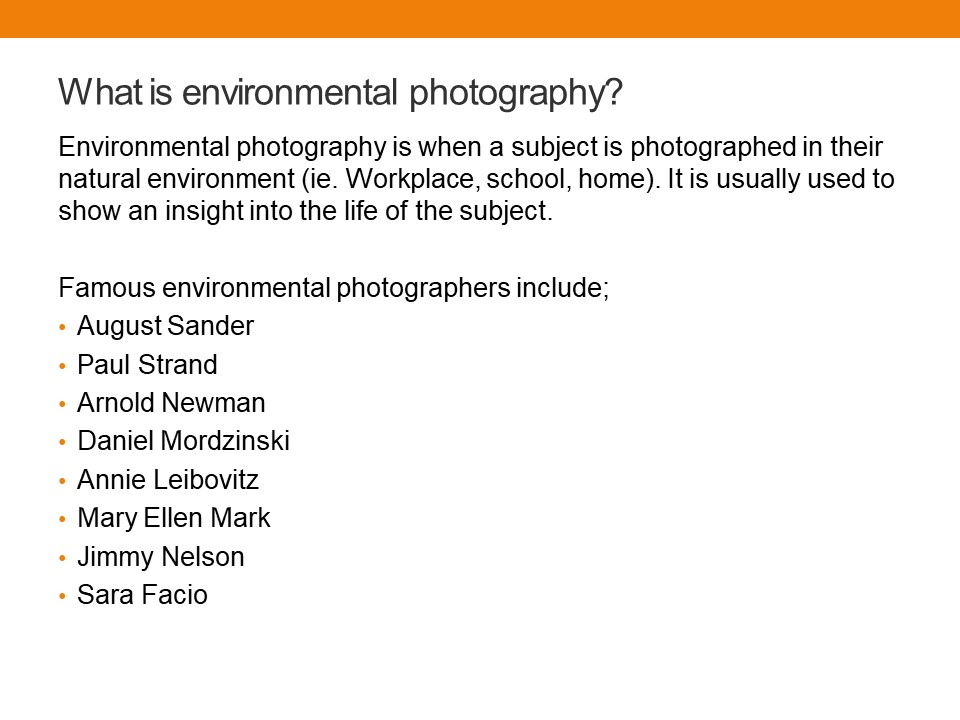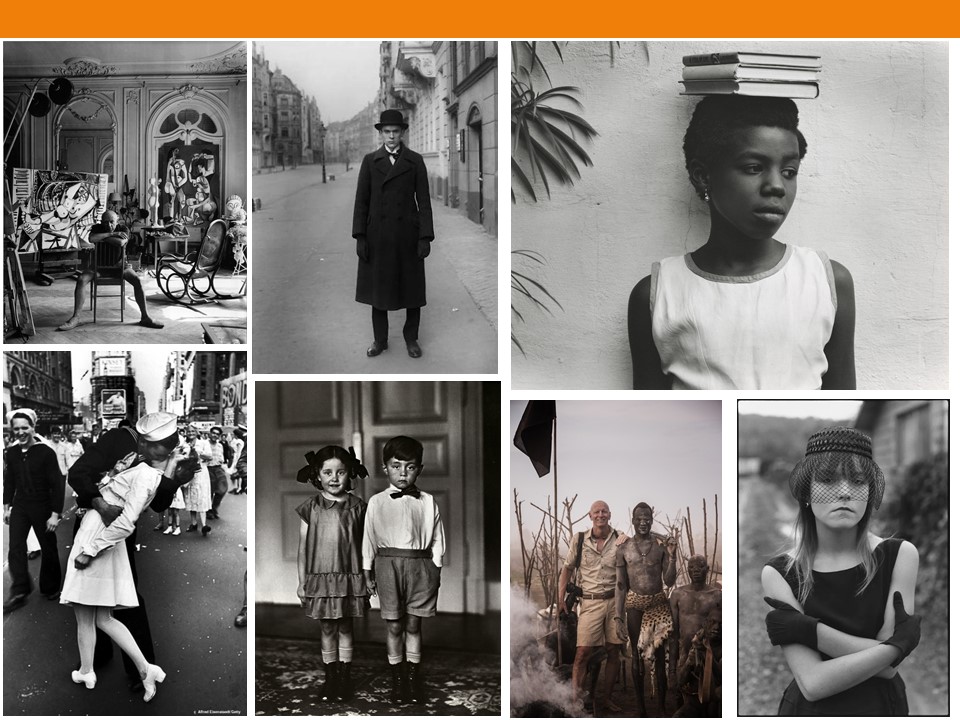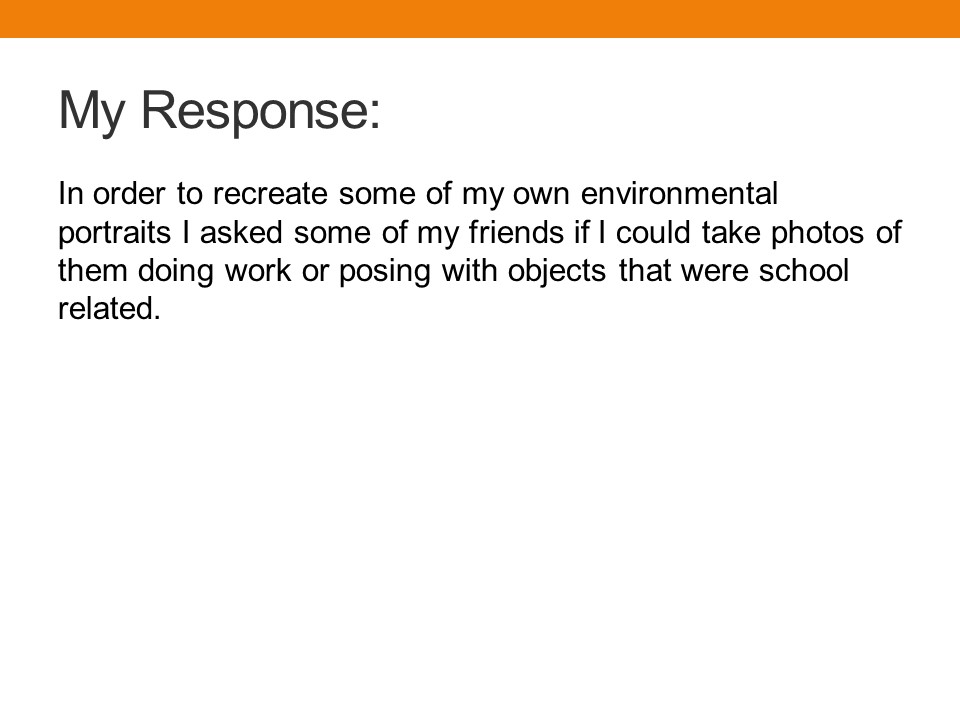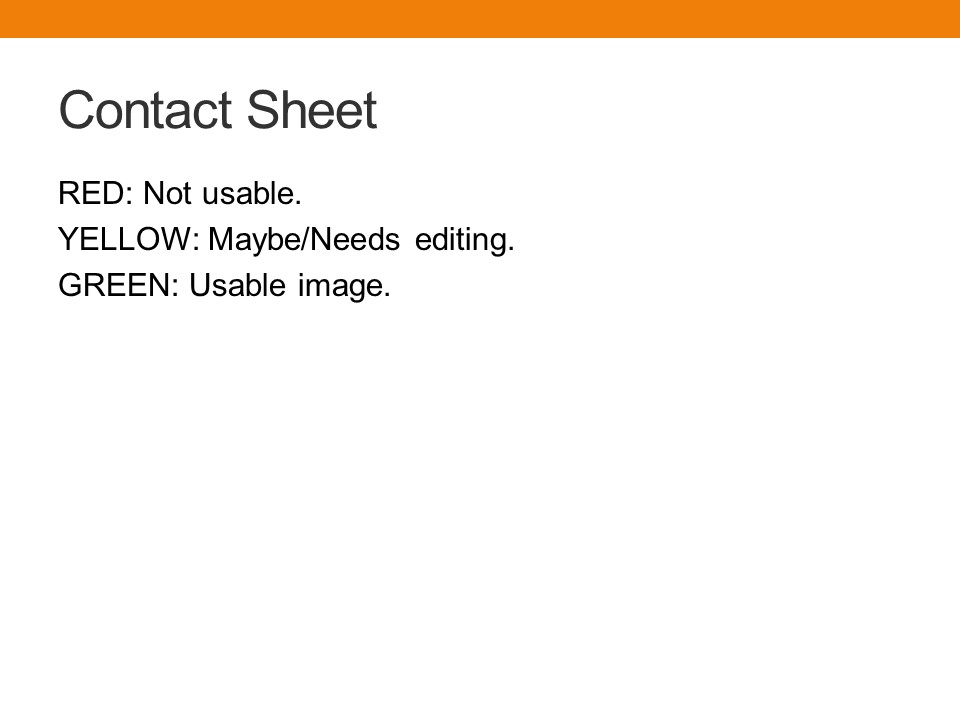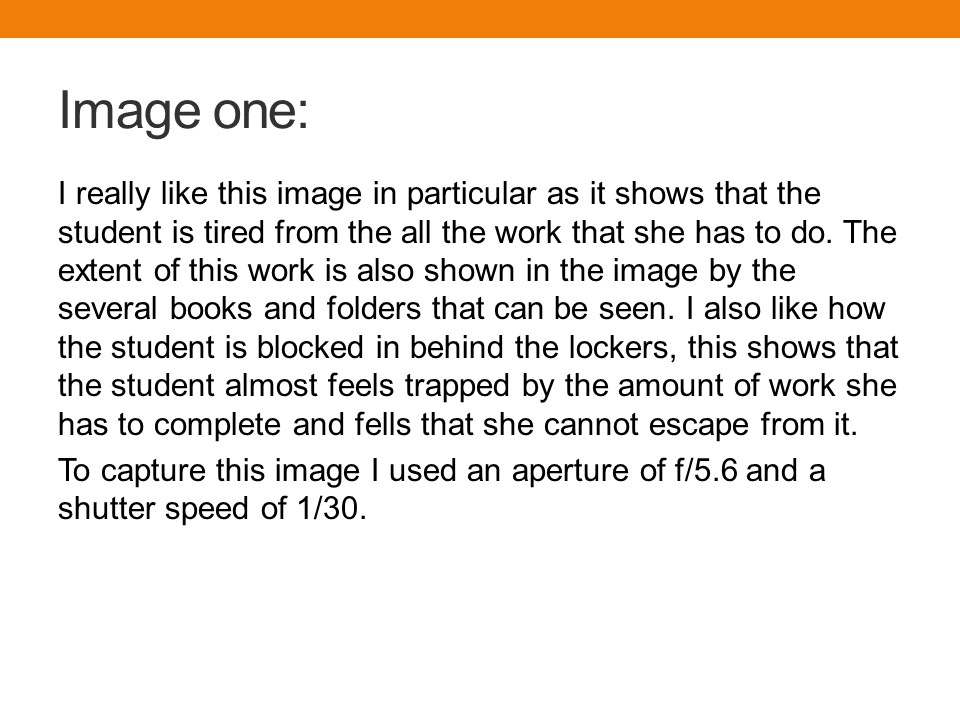My Response:

Best Images:

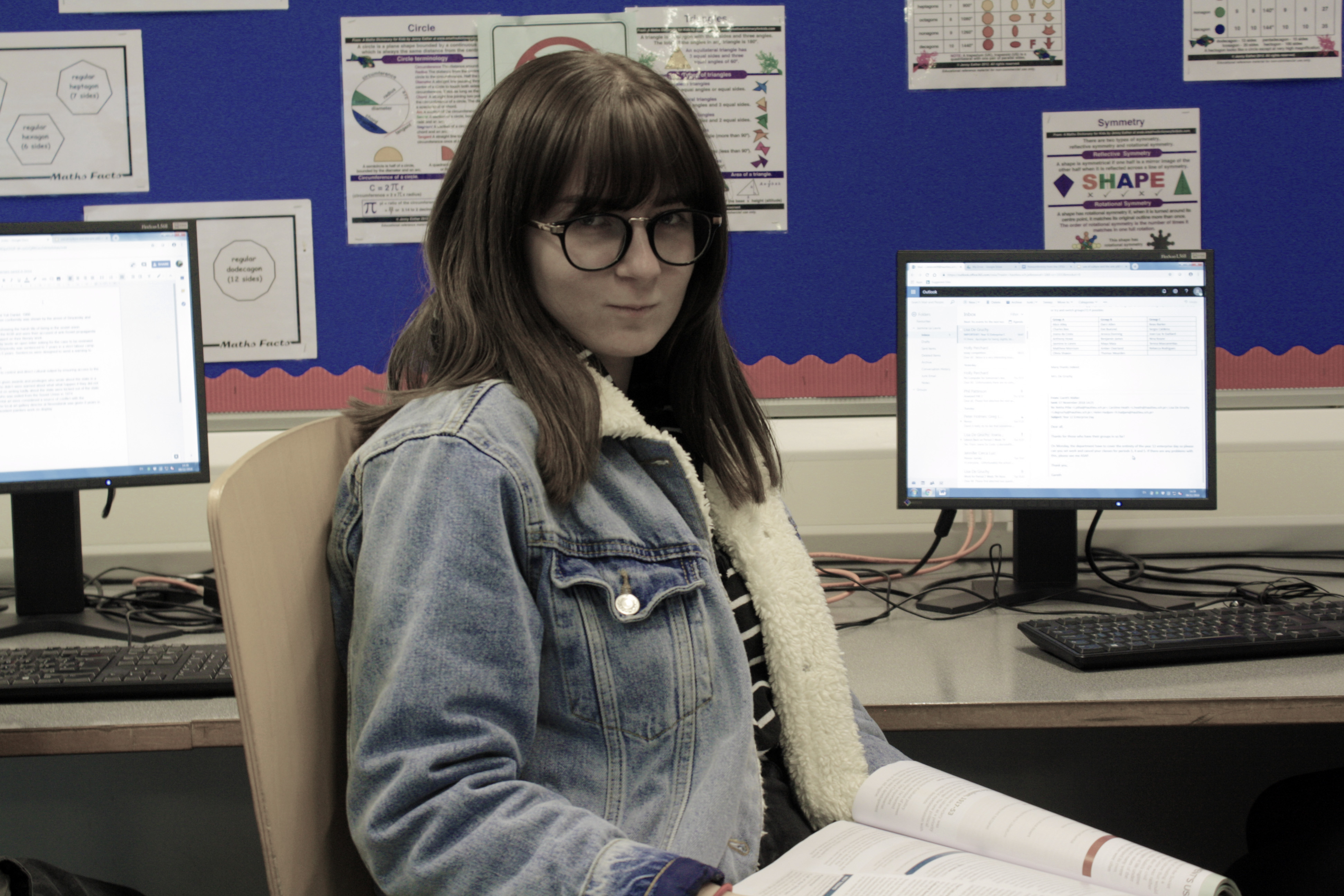
My Response:

Best Images:


August Sander was a German photographer who was born November 17, 1876 in Germany and died April 20, 1964. He got his first camera in 1892, and began taking up photography as a hobby then, after completing his military service time he eventually took up photography professionally. In the 20s, after his service in World War 1 his friendship circle included painters and photographers who were part of the “Neue Sachlichkeit”, which was the “new objectivity movement” where artists began to move away from expressionism to capture things more realistically. He was known for documenting different types of German people by capturing portraits that represented different groups of people rather than representing the individual. One of the most interesting parts of his portraits, is how each photo has interesting context and meaning behind it. When the Nazis came to power in 1933, Sanders work was disapproved. Much of his work including his negatives were ruined either by looters or by air raids. During this time he moved away from portraiture to things less controversial like landscapes.
August Sander mood board

Analysing his images
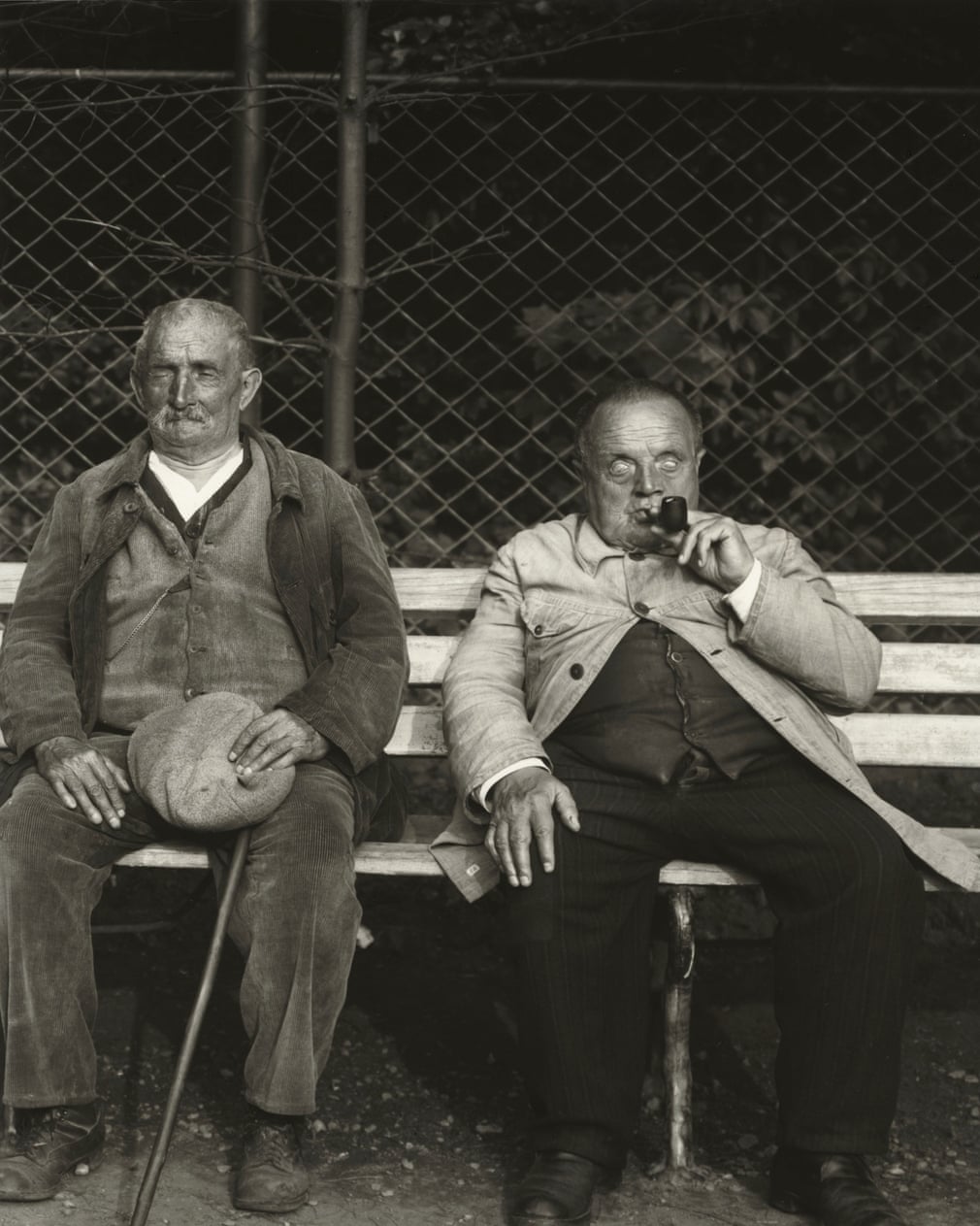 The context behind this image is what makes it stand out to me. This image was taken in the 1930s, and captures a blind miner and a blind soldier sitting on a bench. The context helps make this image really successful as it shows that Sander captured people in everyday and realistic situations, showing realism. The realism captured, helps attract the audience to the image as they can relate to it more.
The context behind this image is what makes it stand out to me. This image was taken in the 1930s, and captures a blind miner and a blind soldier sitting on a bench. The context helps make this image really successful as it shows that Sander captured people in everyday and realistic situations, showing realism. The realism captured, helps attract the audience to the image as they can relate to it more.
The visual elements of the image are also really interesting. in the image we see 2 blind men sitting on a bench, as I mentioned previously but what makes this image visually interesting is the fact that it was not taken in a “perfect” setting, and it could be considered quite “messy”. The audience can clearly see how the wire gate behind the 2 men is quite scruffy, and also uneven, and you can also notice how the floor is also quite unclean. Normally, these qualities would mean that an image would be quite unattractive, but in this case it helps make the image very successful. Because the image doesn’t look perfectly polished and staged, it helps depict a real life situation, This helps make the photo more attractive to an audience because it allows them to see a real story behind an image and not a fake reality, which is something not normally seen in modern portraiture, where a lot of effort usually goes into making everything look picture perfect.
The technical elements, although not incredibly important, also help make this image further interesting. The image appears to be taken in a well lit area, which means that the image is very clear.
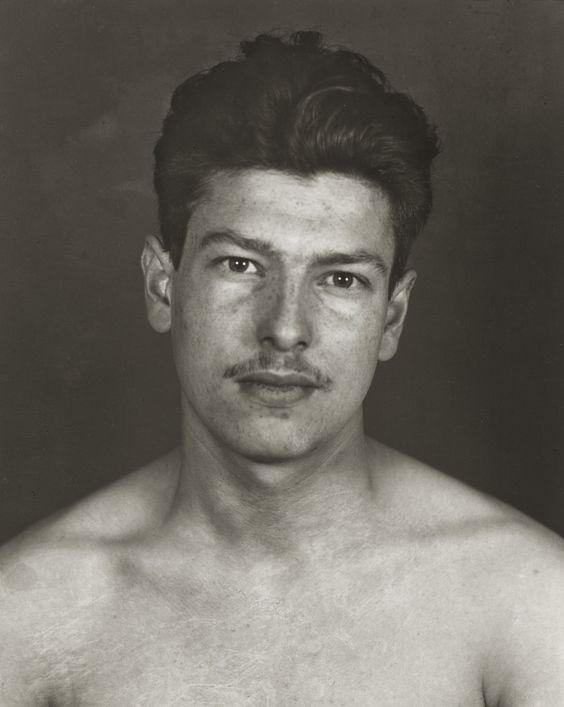 The context of this portrait is also very interesting. This is a portrait of a political prisoner that was taken in 1943, which would mean this was captured during World War 2. This portrait is very interesting because without the background information it would just be a regular photo of a man, however knowing information about who is in the image, instantly makes it more interesting. This is because learning about this person, means that we instantly feel more empathy toward the photo and it becomes more meaningful as it reveals a personality.
The context of this portrait is also very interesting. This is a portrait of a political prisoner that was taken in 1943, which would mean this was captured during World War 2. This portrait is very interesting because without the background information it would just be a regular photo of a man, however knowing information about who is in the image, instantly makes it more interesting. This is because learning about this person, means that we instantly feel more empathy toward the photo and it becomes more meaningful as it reveals a personality.
Visually, The image doesn’t do too much to attract attention as without the background information, it is just a regular photograph of a man. However, the subject is well placed in the frame so no unnecessary background is visible, meaning the audience can focus more on the person.
Conceptually, this picture is also very interesting. This photo shows how someone who looks so ordinary, can actually be very unique and have an interesting backstory. This photo could teach people not to be so judgemental and to not judge someone by how they look.
1st photoshoot intentions
From Sanders’ images it has became clear that he captured people in their everyday environments. My intention for my photoshoot is to also capture someone in their regular environment, but in the modern day. I plan to take photographs of my friend while she is working. As I want the images to look realistic -like Sanders’ photos- I will need to be using a quick shutter speed as I wont be able to stop her to pose. I will also have to capture a large amount of images, as it is likely that not very many of them will be too successful as they will be taken quickly and on the spot. I also plan on not making the images look very polished, and perfect in regards to the background and things in the frame, as I like how Sanders’ images look more realistic when they haven’t been perfectly planned.
Contact sheet
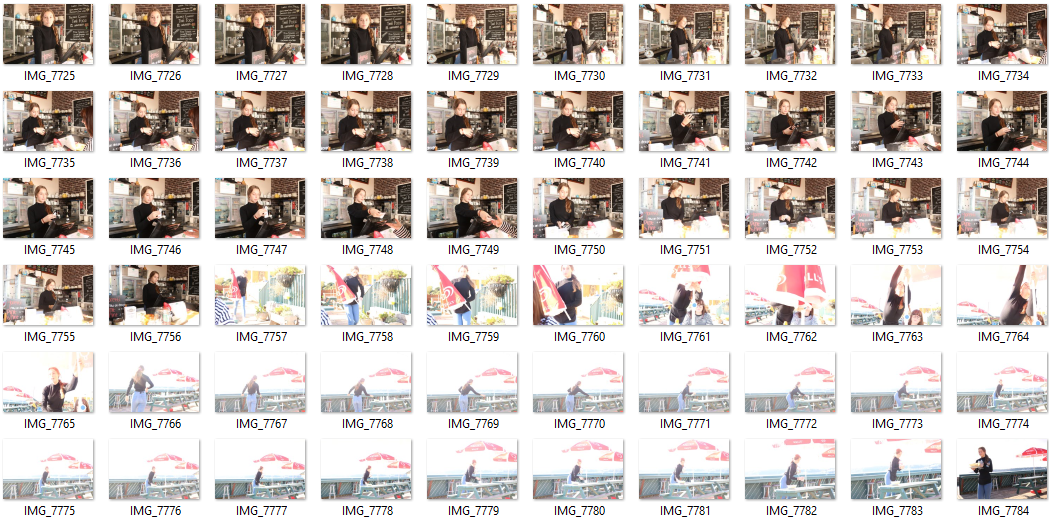
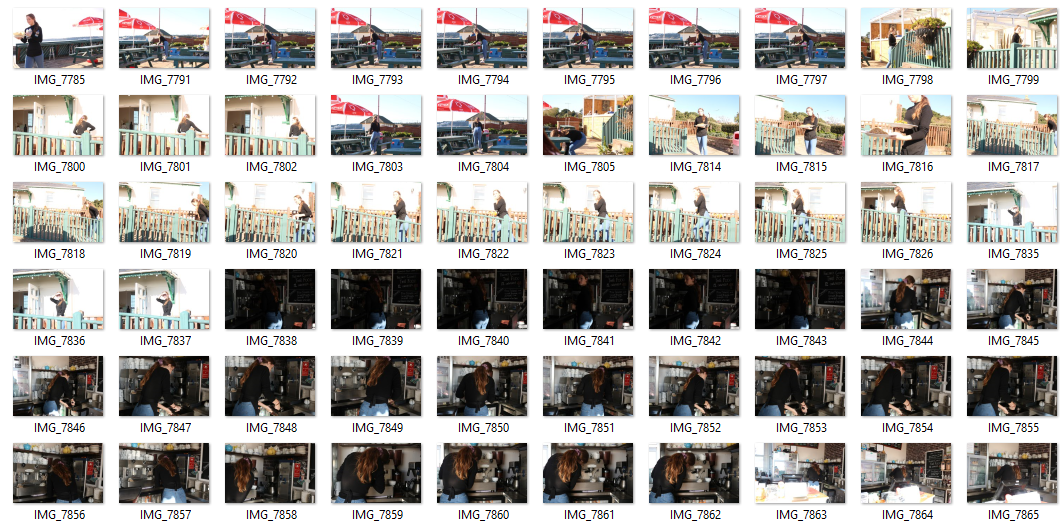
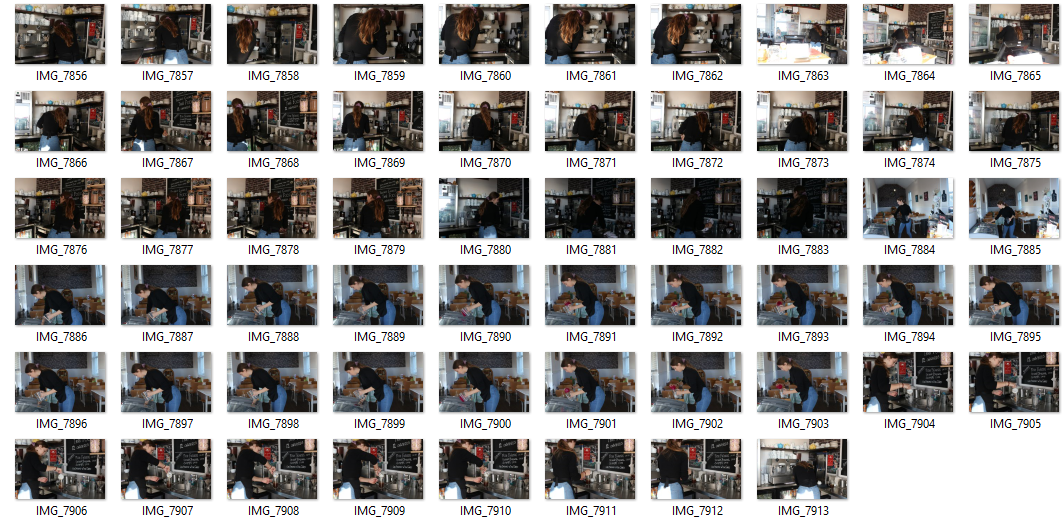
Best outcomes
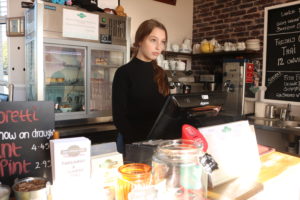
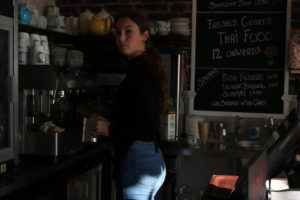
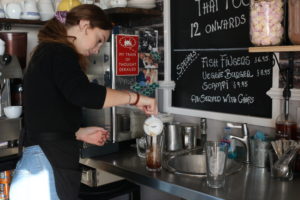
Overall, I think my photoshoot went well however it could’ve gone better. Next time, I want to focus more on having the subject interact with the camera more as I think this way, I would get more successful images. These were the 2 best outcomes of my photoshoot. I like these images as they depict life, working as a waitress.

Visually I like the first image as you can clearly see that prior to it being taken, the model was busy making coffee, and this makes the image look a lot less planned, therefore making it more realistic.
Technically, however I think that I could’ve changed my camera settings in order to make the image look better. For example, I think the image looks slightly dark. Next time I think it would be a good idea to put the ISO higher in order to make the lighting better. On the other hand, I think that the shutter speed used was successful as it allowed me to capture the image very quickly with minimal distraction to the model
Another reason that I like this image is due to a potential underlying concept. The image was taken very quickly, just as the model looked at me and you can see that there is a lot captured in the frame, like the till and the board that has been written on to her right. All these ‘distractions’ along with the image being taken quickly, and along with the fact the model is multitasking by attempting to make coffee and looking into the camera, it shows how modern working life can be really hectic and busy.
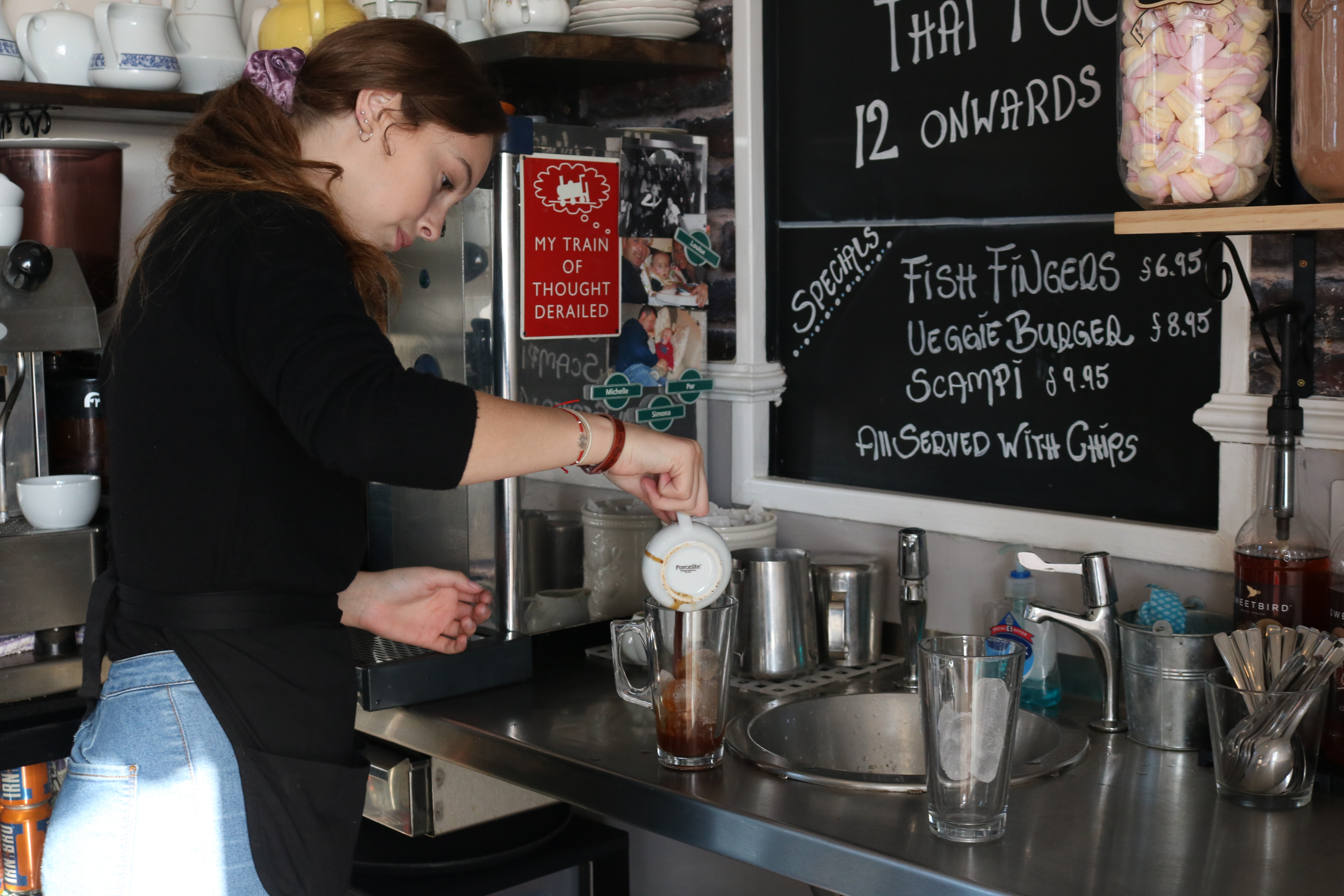 Visually, I think this photo is quite pleasing as it uses the rule of thirds, with the model on the first third of the image. Although the model isn’t directly looking at the camera, you can still see part of her face. It is also clear that she is working, making the photo more realistic and therefore a lot more interesting to look at.
Visually, I think this photo is quite pleasing as it uses the rule of thirds, with the model on the first third of the image. Although the model isn’t directly looking at the camera, you can still see part of her face. It is also clear that she is working, making the photo more realistic and therefore a lot more interesting to look at.
On the technical side of the image, I think it could have been improved. I think that the image turned out too bright. I think it would’ve turned out better if the ISO was turned down slightly, to darken it a bit more. This photo was taken with a quick shutter speed, meaning that I was able to capture it quite quickly, as the model wasn’t posed like this for long.
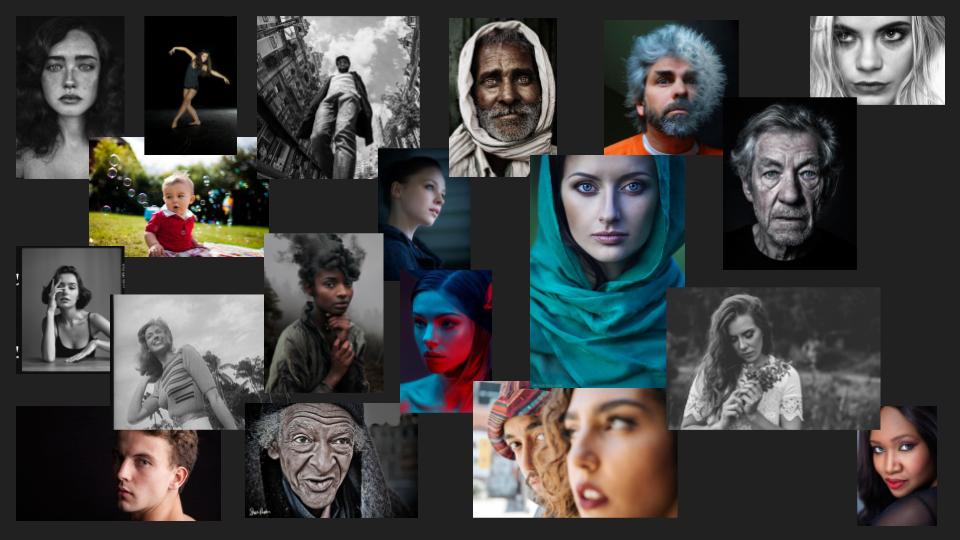


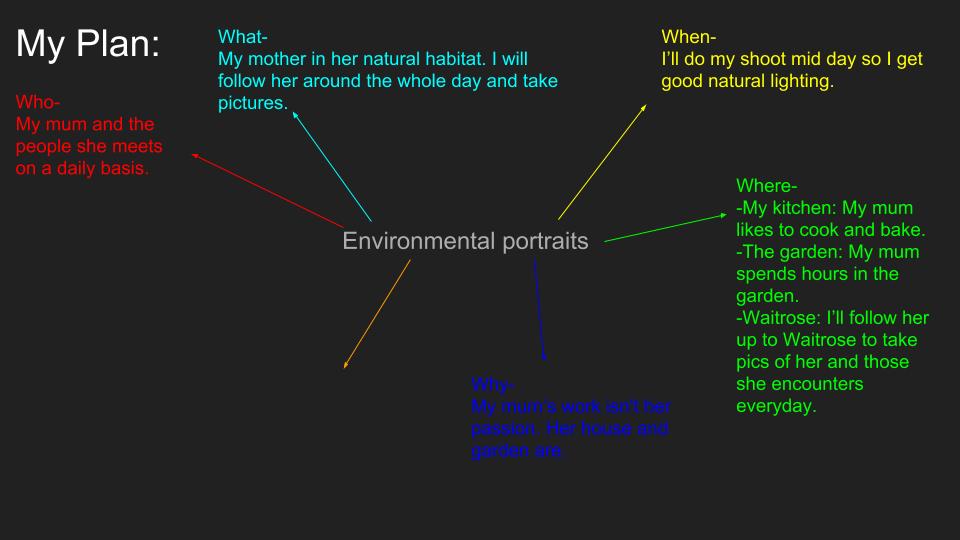
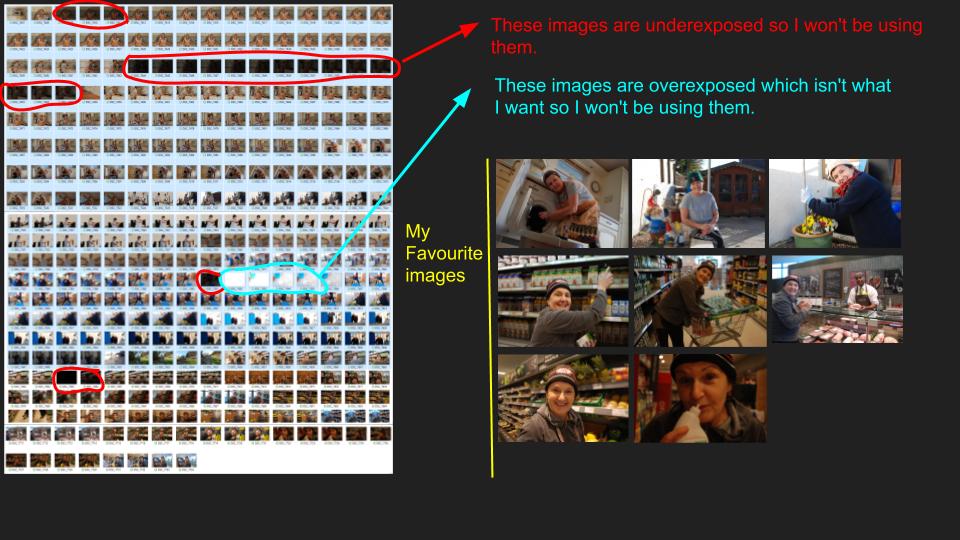

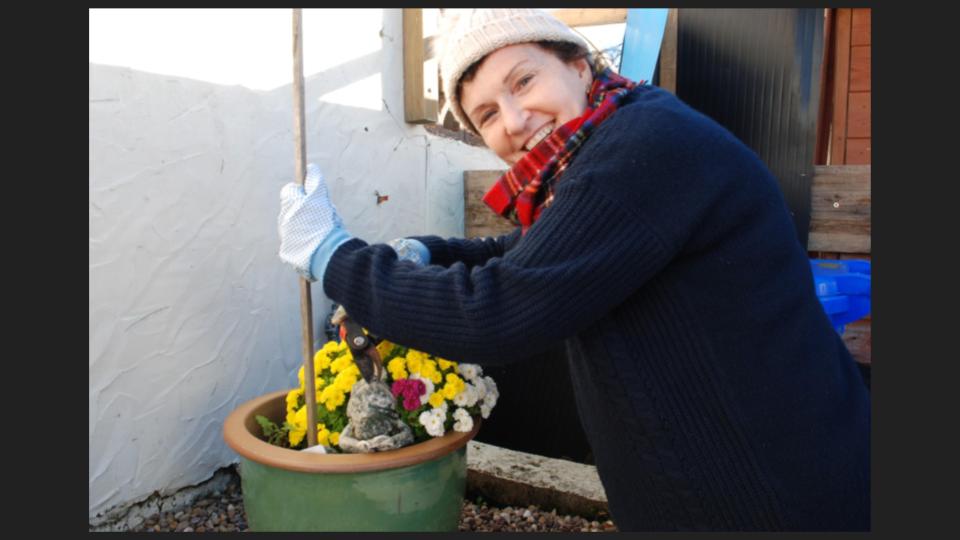

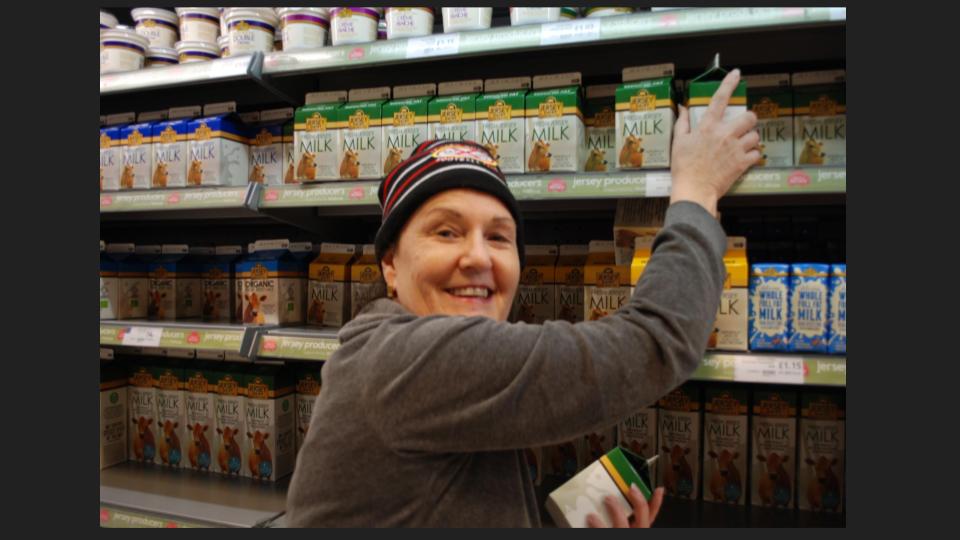
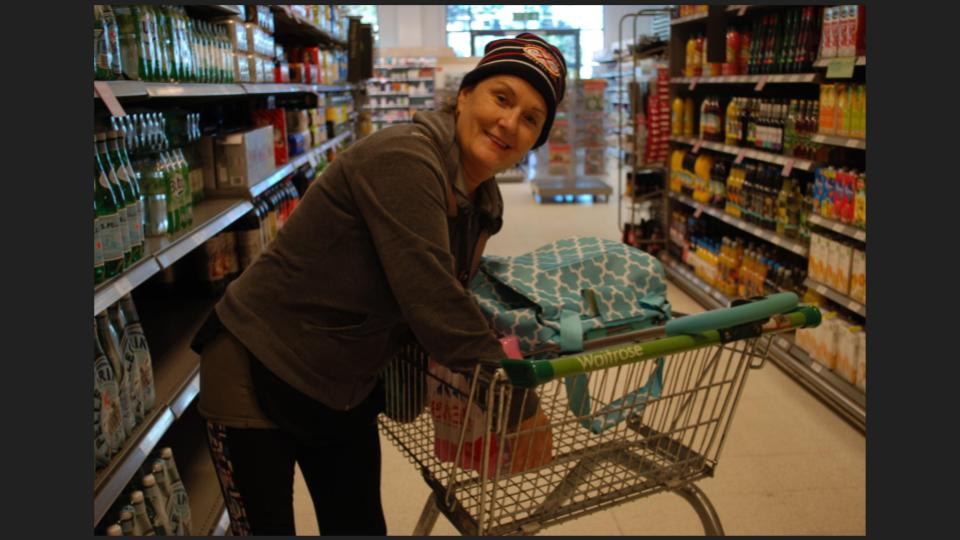
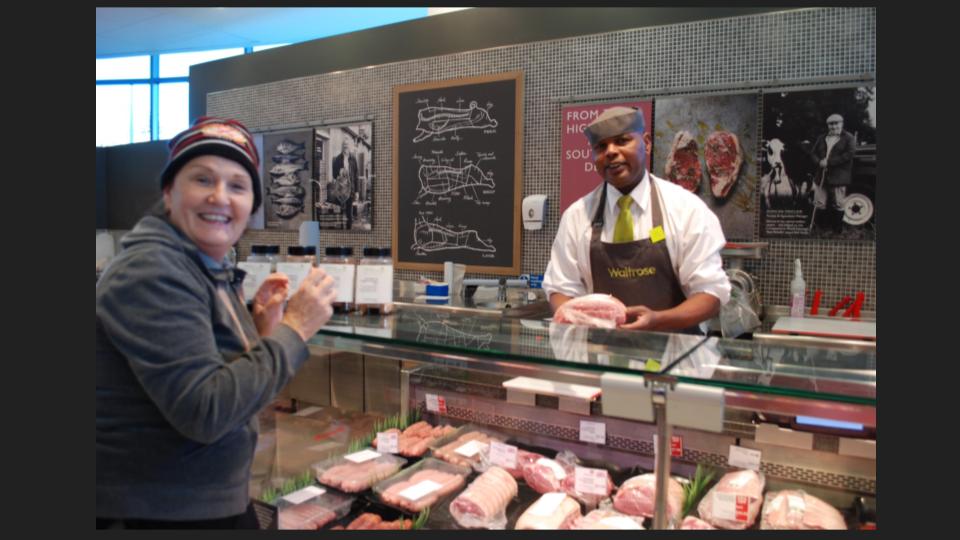
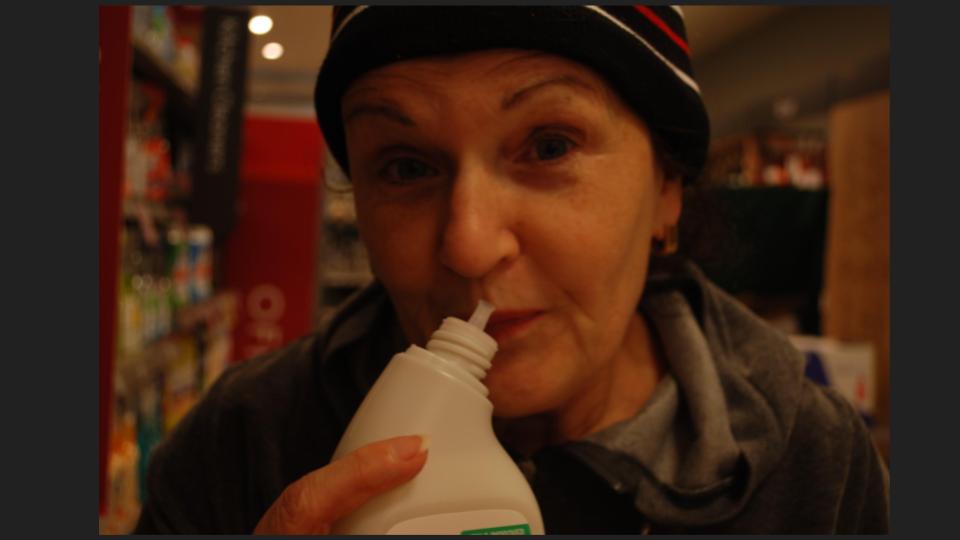
For this practical I wanted to capture people doing ordinary things and having interactions between each other, but add a more dramatic or stylized edge to the pictures. this was my first attempt at street photography and found it to be very interesting seeing people go about their day. After selecting my final images, I decided that I waned to assign each picture an emotion. Some of the images clearly showed some emotion to begin with, but I wanted to edit them to see if i could achieve this while still making each picture look realistic and not over-edited. Below I have put together a contact sheet an some final images that I have edited.

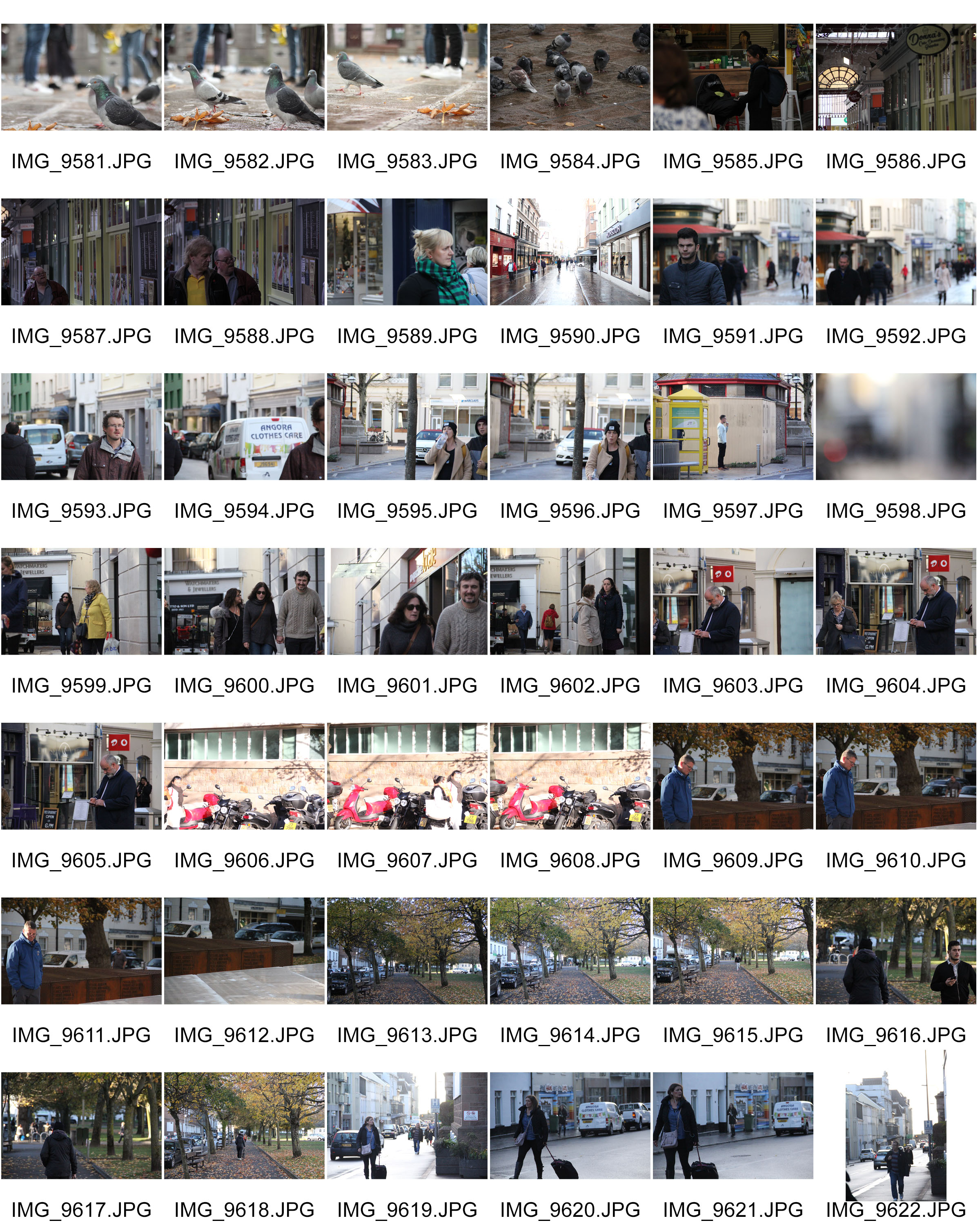
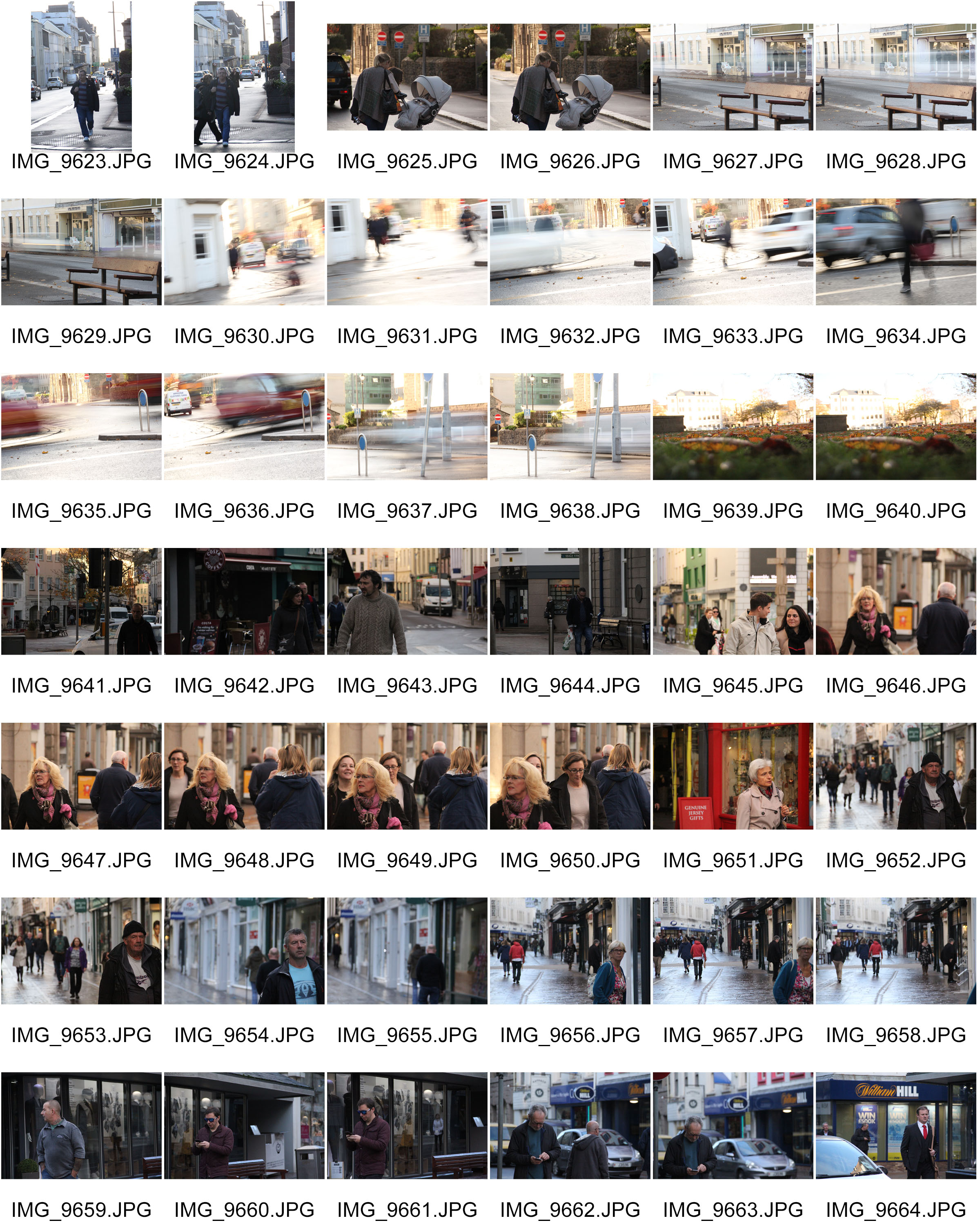

Final Images
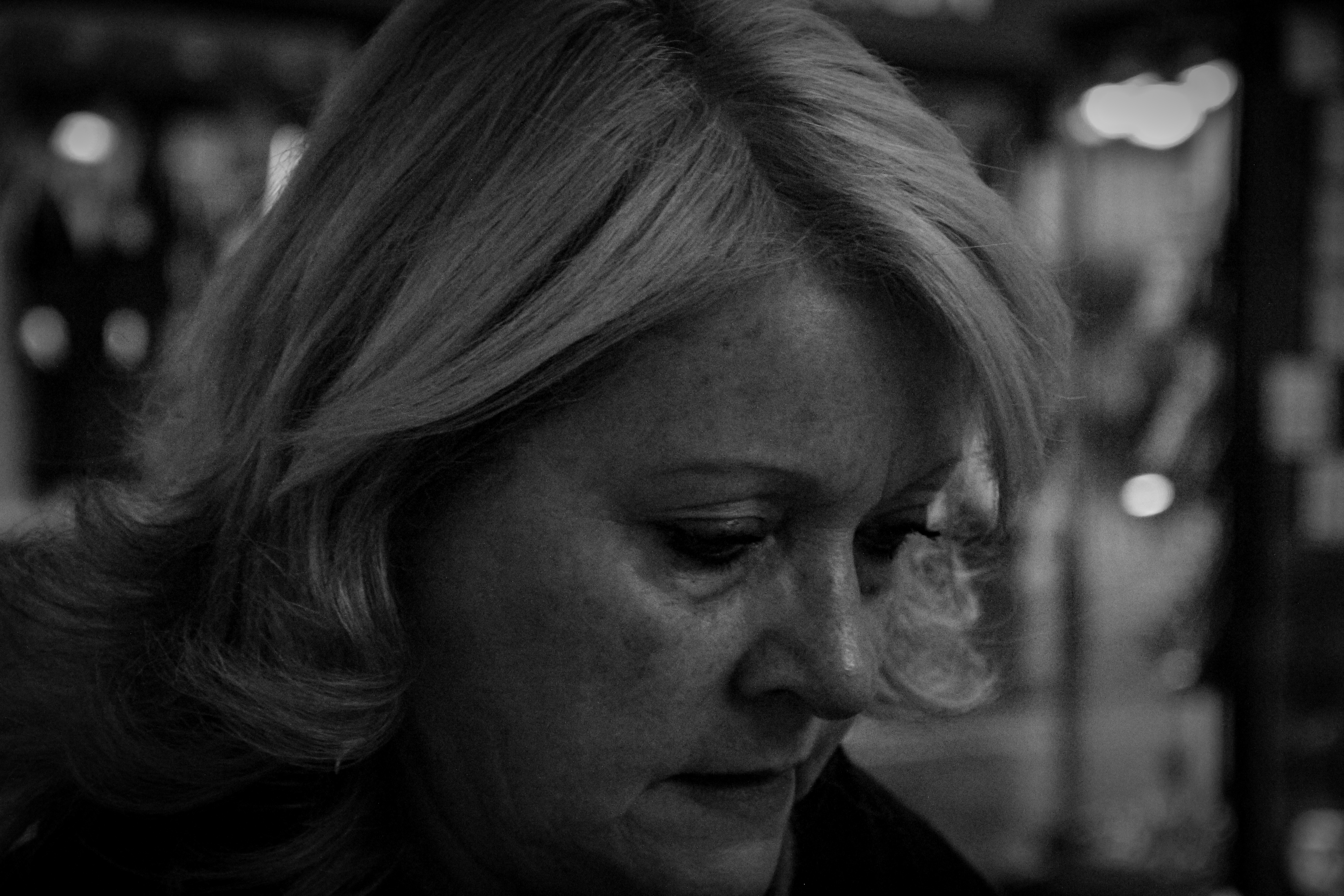
Edited in: Lightroom
I started with the emotion of sadness, trying to capture the somber atmosphere by getting very close to the subject so it seems as though nothing is going on in the world around them. I then desaturated the image and lowered the exposure so that it would seem darker.
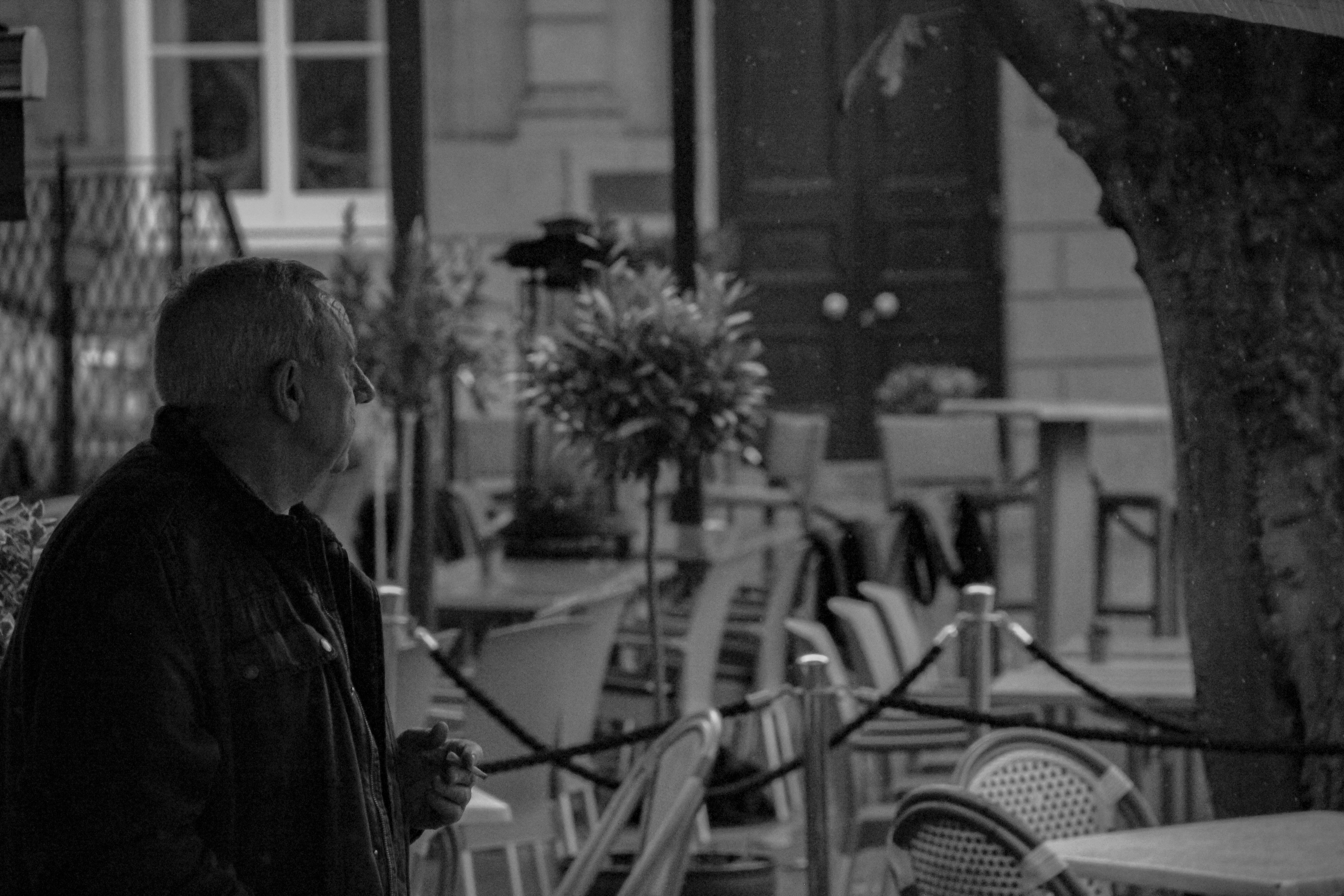
Edited in: Lightroom
I had a similar approach with this photo as i did with the last. I wanted to capture a somber atmosphere and as you cannot see the subjects face, through the use of some small adjustments and editing, the picture is perceived to be sad as the man is looking into the distance, and because the viewer does not know what he is looking at, it seems as though he is staring at nothing.
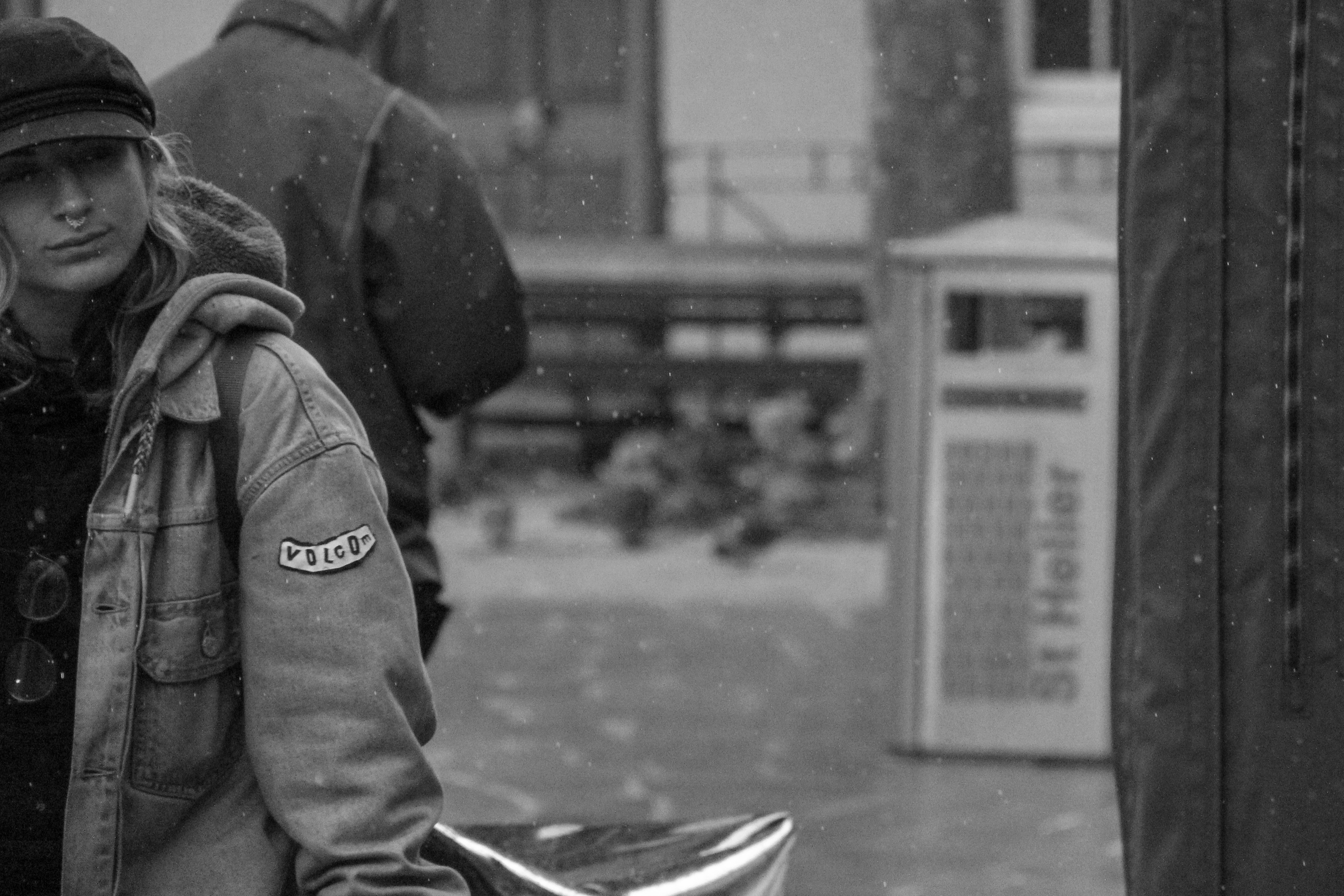
Edited in: Lightroom
For this image I used a high shutter speed to capture raindrops frozen in midair. I try to utilize the rule of thirds in many of my pictures however i think that it is especially noticeable in this image. The frozen rain, adds a sense of temperature, making the image look cold and dark.
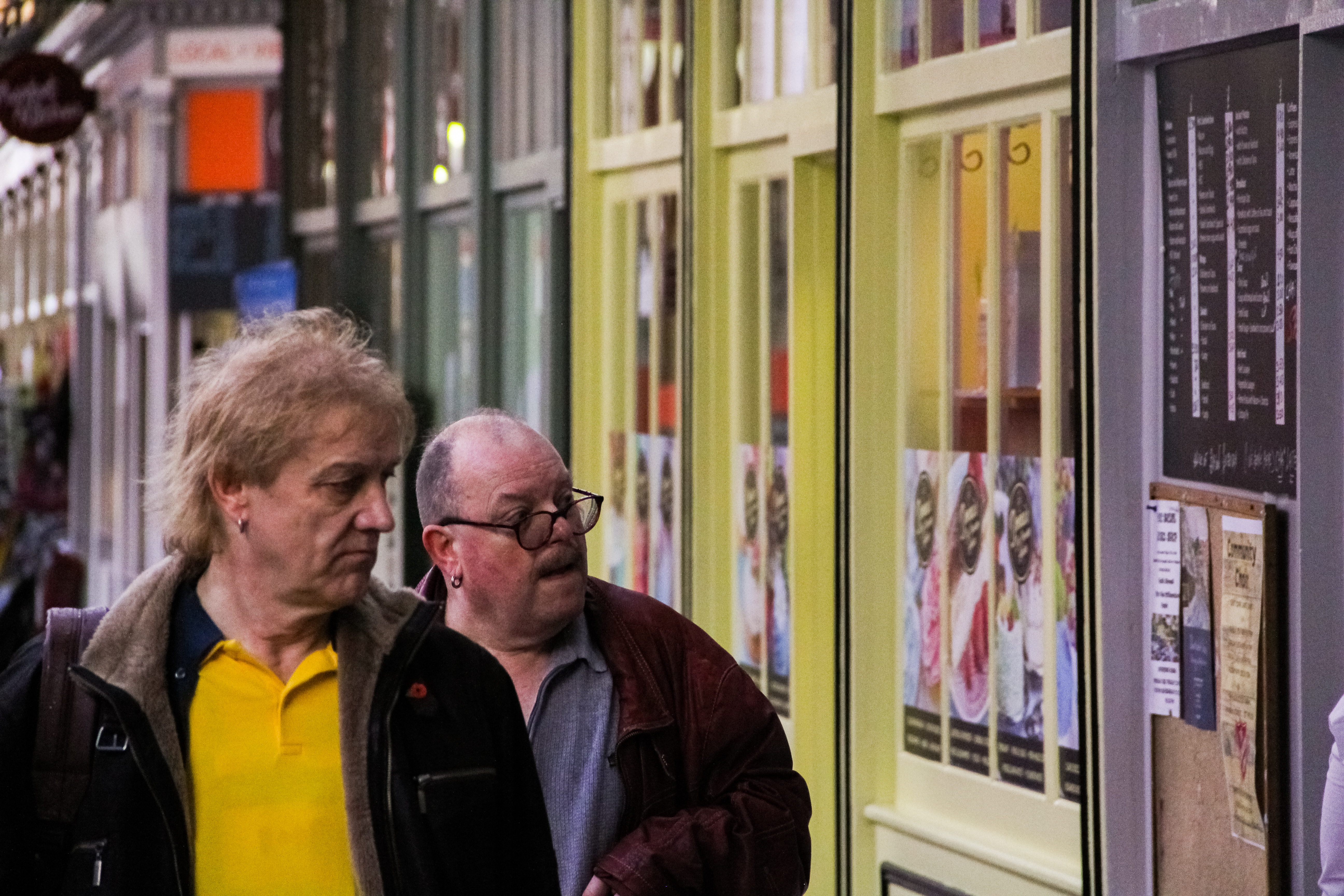
Edited in: Lightroom
I liked the use of colour in this image and i decided that desaturating it would make it lose some of its most interesting characteristics. For instance, something I noticed while editing the picture is that the man on the left’s shirt is almost a perfect match to the yellow reflection in the glass, and the man on the right’s shirt is matching the grey-painted board on the right side of the image. This helps create a sense of symmetry, as the picture is almost split in to two, at least regarding colour, and gives it a subliminally symmetrical look.
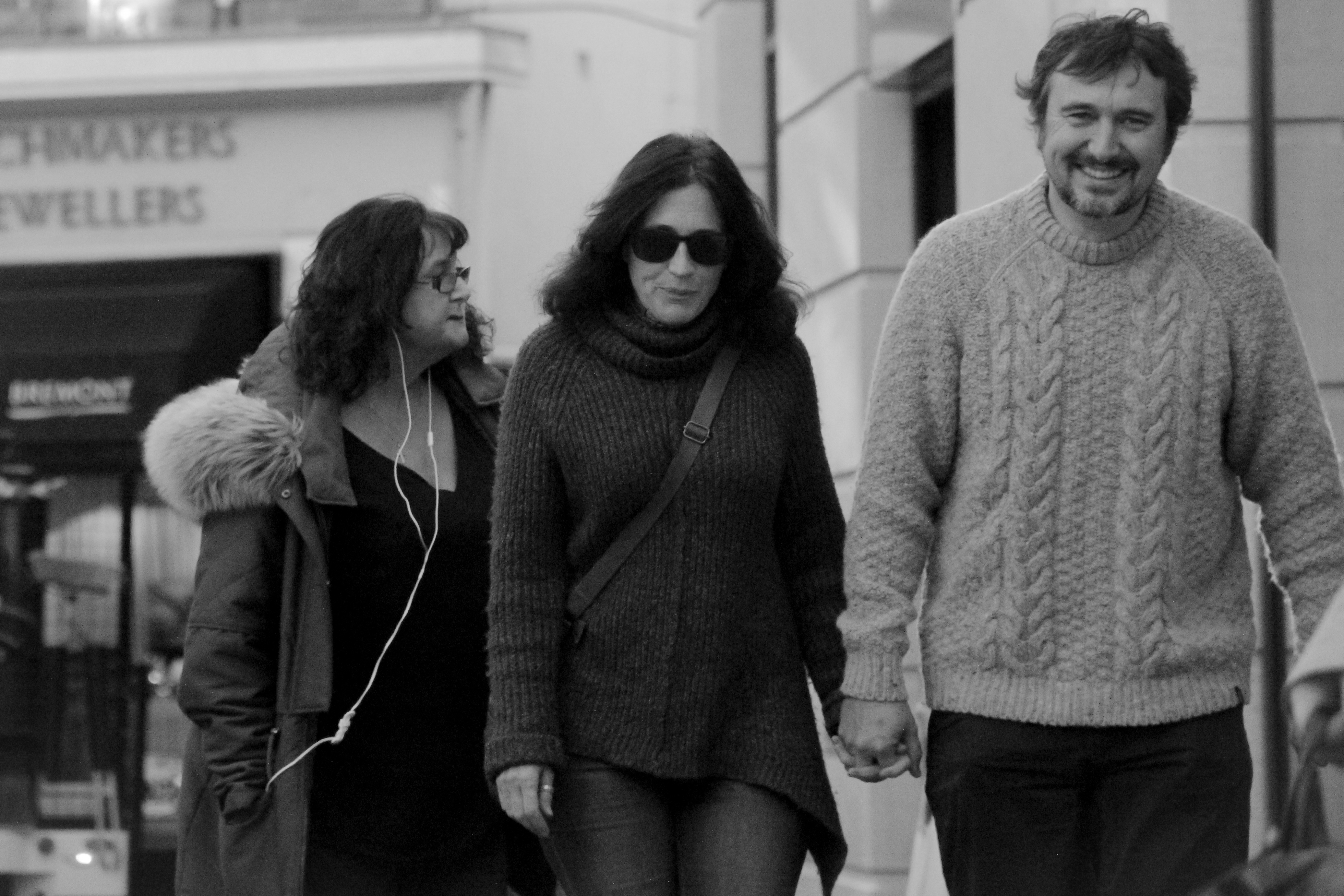
Edited in: Lightroom
Many of my images were focused one person at a time, however this is one of the few which focuses on relationships and interactions between different people in the same frame. Although this is quite a dark image with not many bright highlights, the smiles on the subject’s faces show a clear juxtaposition to the exposure.
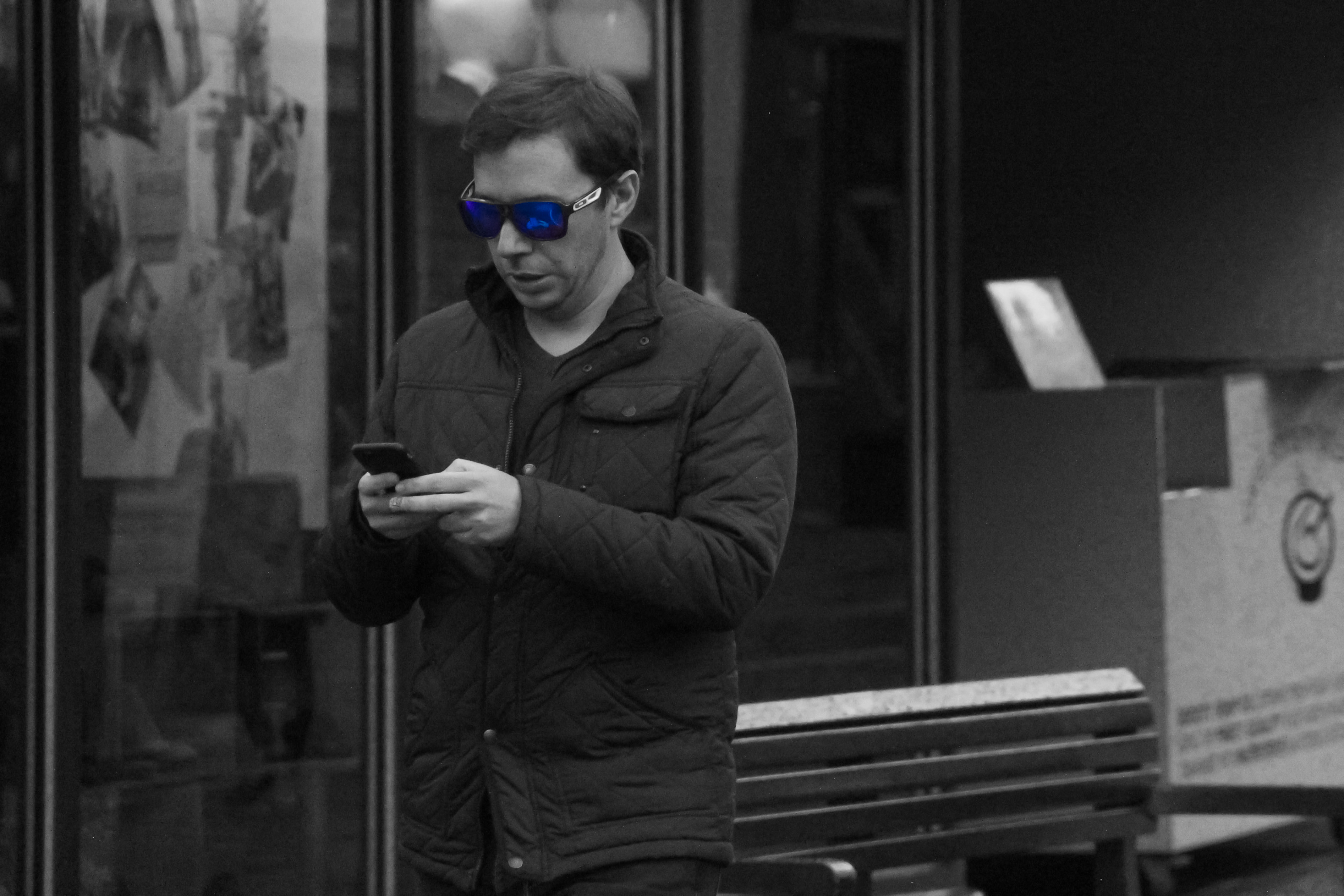
Edited in: Lightroom + Photoshop
This picture is slightly more stylized than I originally intended however i like the idea that the subject is so engrossed in their phone that the rest of the world isn’t being taken in, hence why i saturated the polarized lenses of his sunglasses and made the rest of the picture B&W.
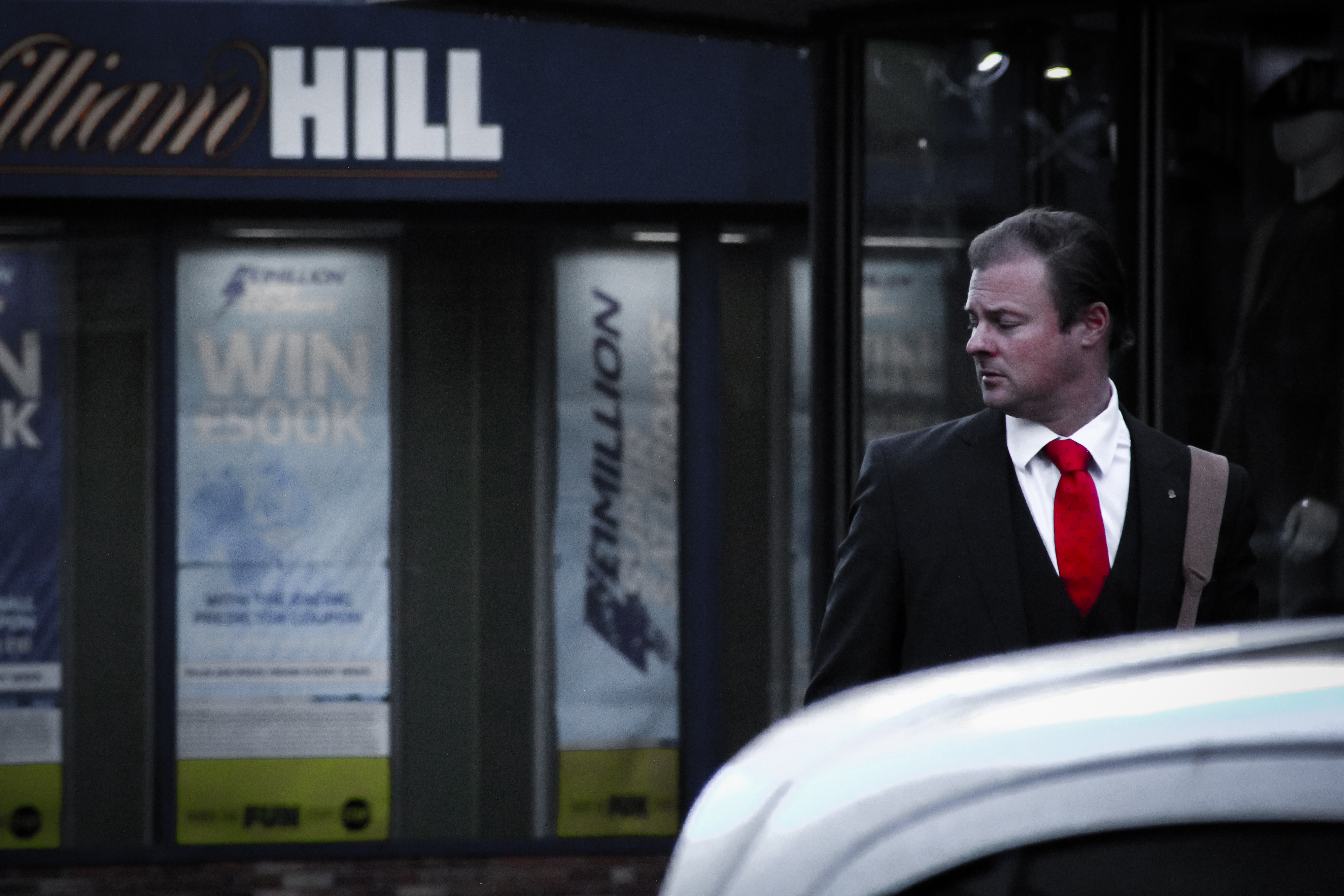
Edited in: Lightroom
In this image it seemed as though the man was very important, at least compared to his surroundings. for this reason i decided to bring down the colour saturation in his surroundings and emphasize the red of his tie to draw the eye to the right of the picture.
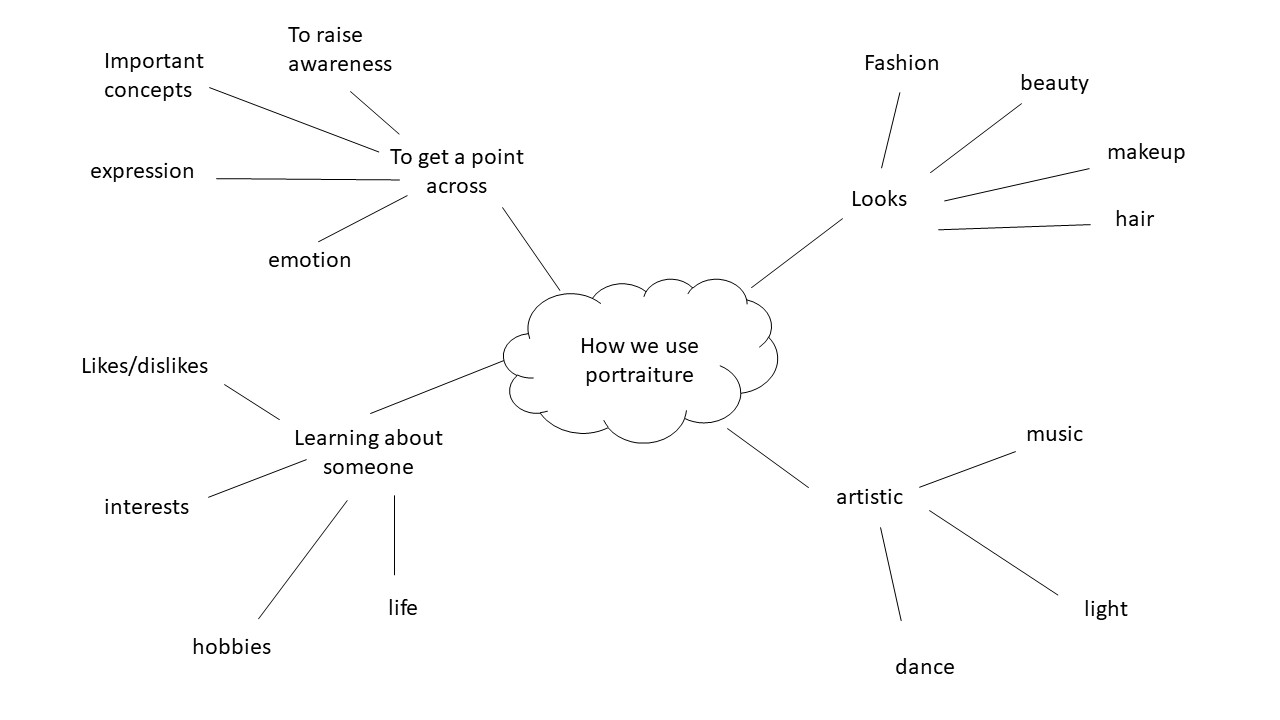
mood board of types of portraits
Portraiture can be done in several different ways. Its important to pick the type that’s most appropriate according to what your responding to. Below is a mood board showing different styles of portraiture suitable for different occasions.
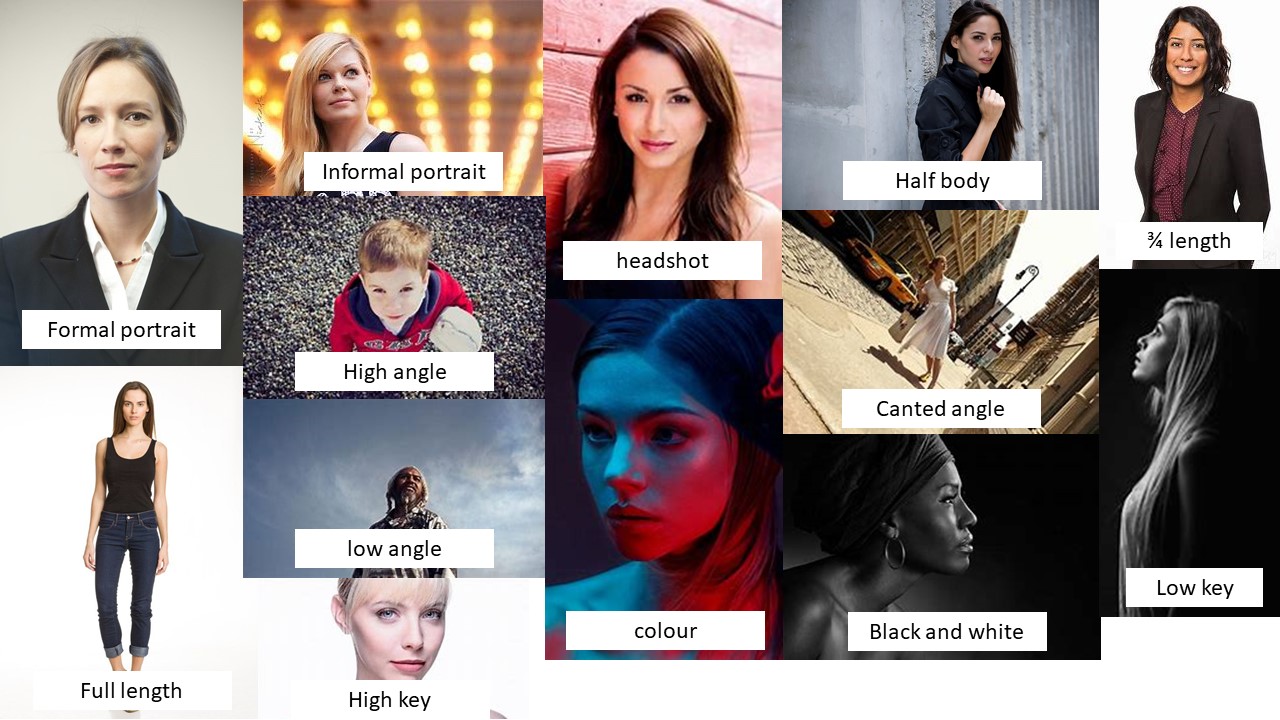
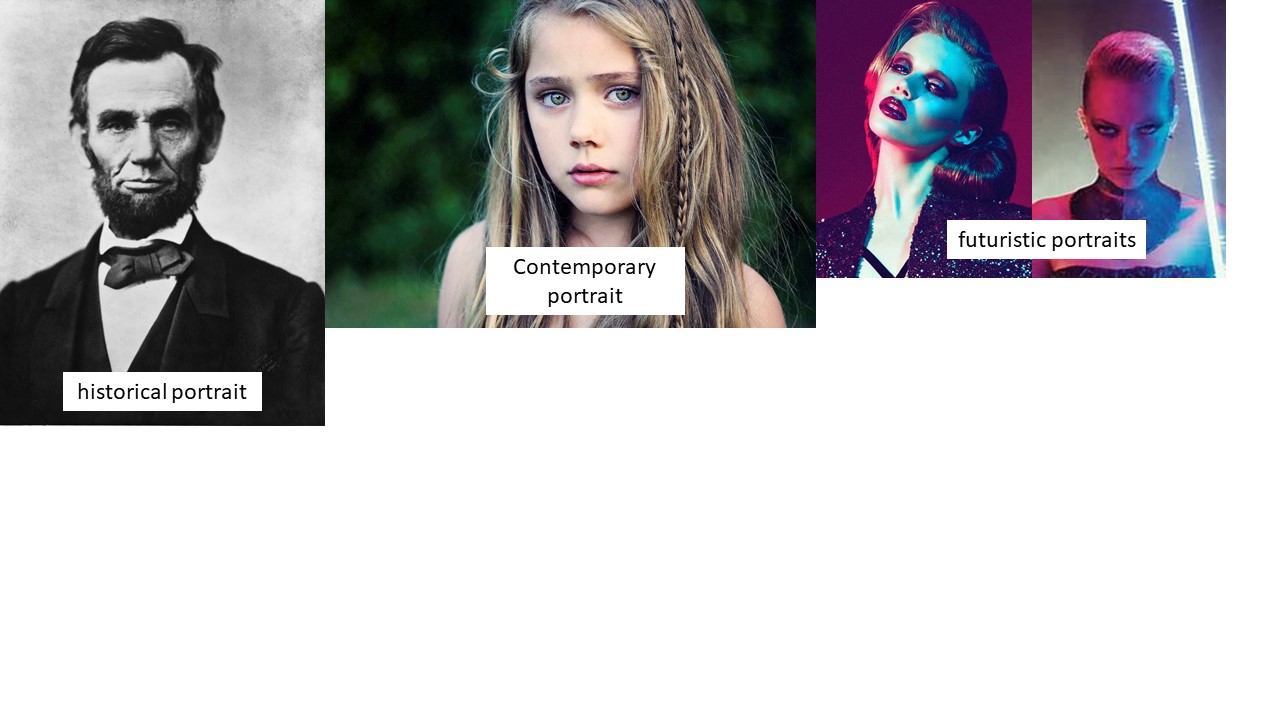
Arnold Newman:
Born in Manhattan (3rd March – 1918), Newman grew up in Atlantic City, New Jersey and later moved to Miami Beach, Florida. In 1936, he studied painting and drawing at the University of Miami. Unable to afford continuing after two years, he moved to Philadelphia to work for a studio, making 49-cent portraits in 1938. Newman then returned to Florida in 1942 to manage a portrait studio in West Palm Beach. Three years later, he opened his own business in Miami.
Arnold Newman is often associated with being the first photographer to use “environmental portraiture”, in which Arnold placed the subject in a carefully controlled setting to capture the essence of the individual’s life or work.
Newman normally captured his subjects in their most familiar surroundings with visual elements representing their professions and personalities (such as tools in a workshop or instruments in a musicians studio). Using a large-format camera and tripod, he worked to record every detail of a scene to create an in depth and accurate image of the subject’s life.
“You don’t take pictures with your camera. You take pictures with your mind and your heart.” -Arnold Newman
Mood Board:
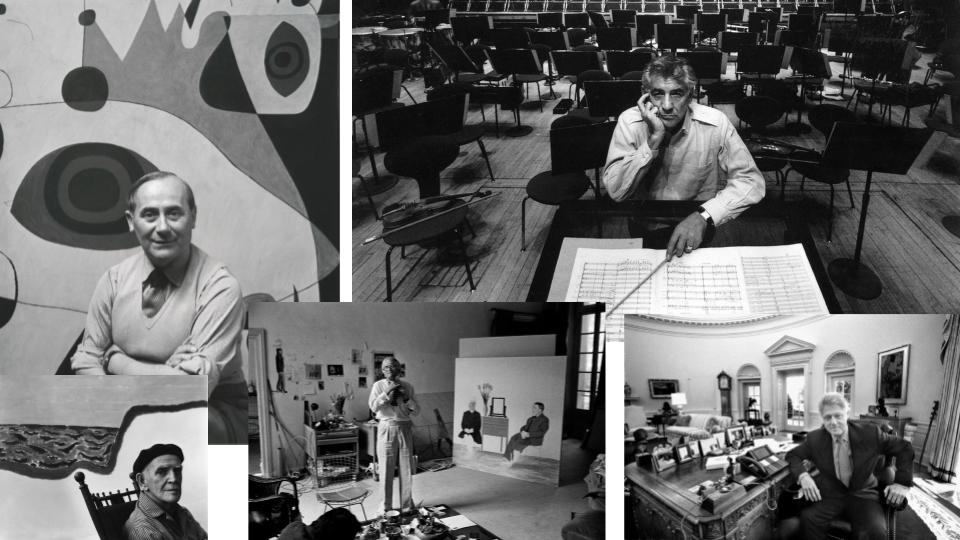
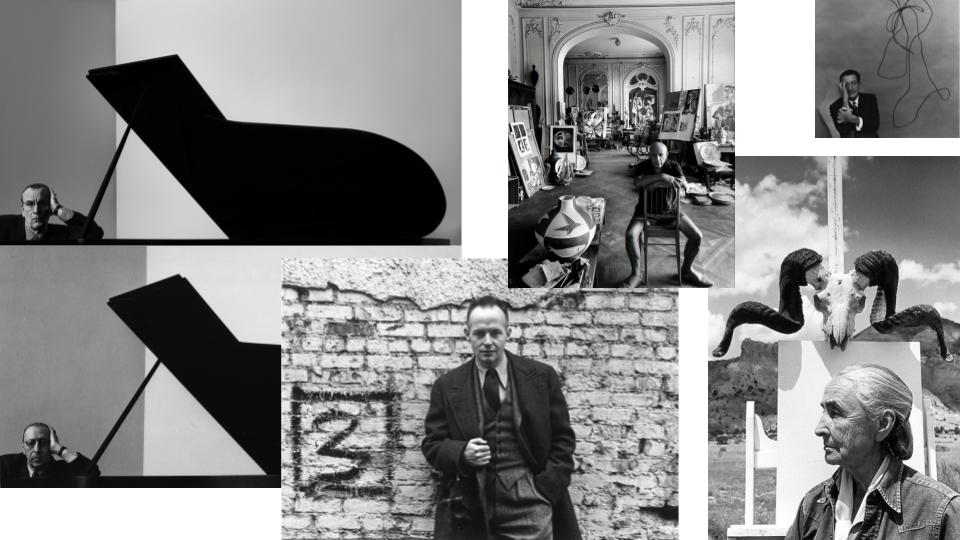
Selected Image:
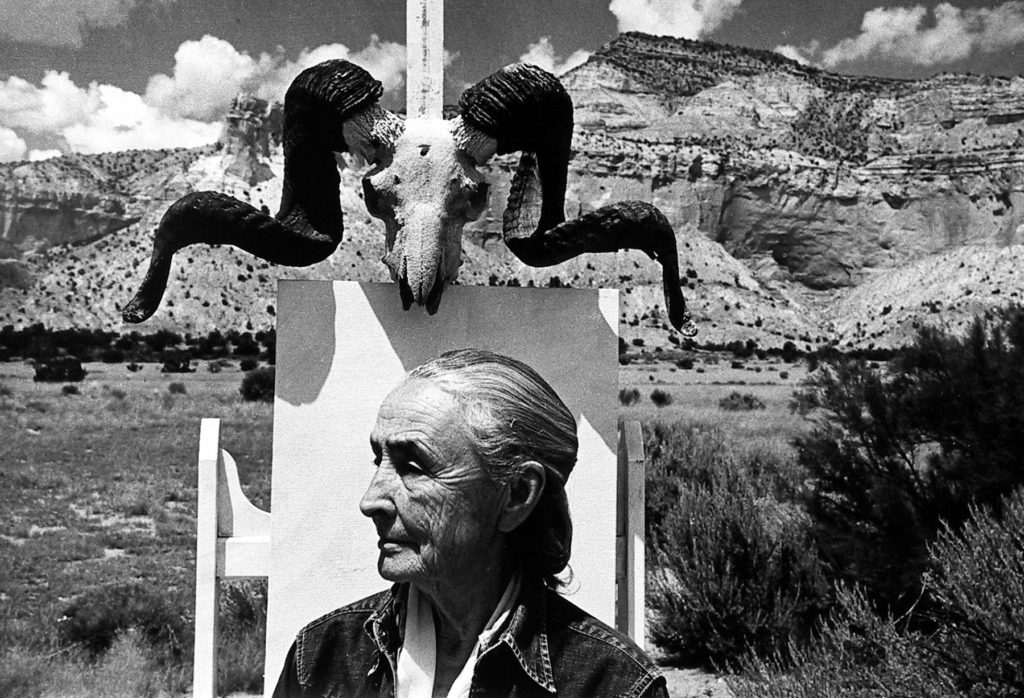
Georgia O’Keeffe, Ghost Ranch, New Mexico, 1968
Gelatin silver print; printed c.1968
9 1/8 X 13 1/2 inches
Technical:
Visual:
Contextual:
Conceptual:
Georgia O’Keeffe:
Georgia O’Keeffe (born 15th November 1887) first traveled to New Mexico in 1929 and moved there permanently in 1949, following the death of her husband, Alfred Stieglitz. Although she achieved early success as a painter living in the East, the landscape of the desert gave O’Keeffe her greatest inspiration.
She often painted familiar subjects such as flowers, buildings, and objects found on walks around her remote home. She did so in a unique way, often transforming common items into colourful pieces of art, focusing heavily on line and form within her work. By the late 1940s O’Keeffe was one of the best-known and original artists in America.
Some of O’Keeffe’s Work:
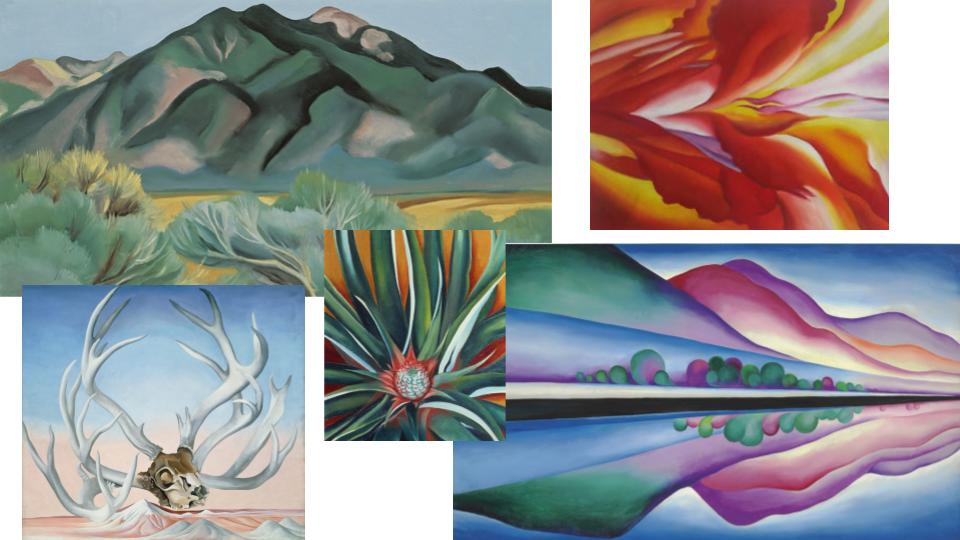
An environmental portrait is a portrait executed in the subject’s usual environment, such as in their home or workplace, and typically illuminates the subject’s life and surroundings.
By photographing a person in their natural surroundings, it is thought that you will be able to better illuminate their character, and therefore portray the essence of their personality, rather than merely a likeness of their physical features. It is also thought that by photographing a person in their natural surroundings, the subject will be more at ease, and so be more conducive to expressing themselves, as opposed to in a studio, which can be a rather intimidating and artificial experience.
Contact sheets:
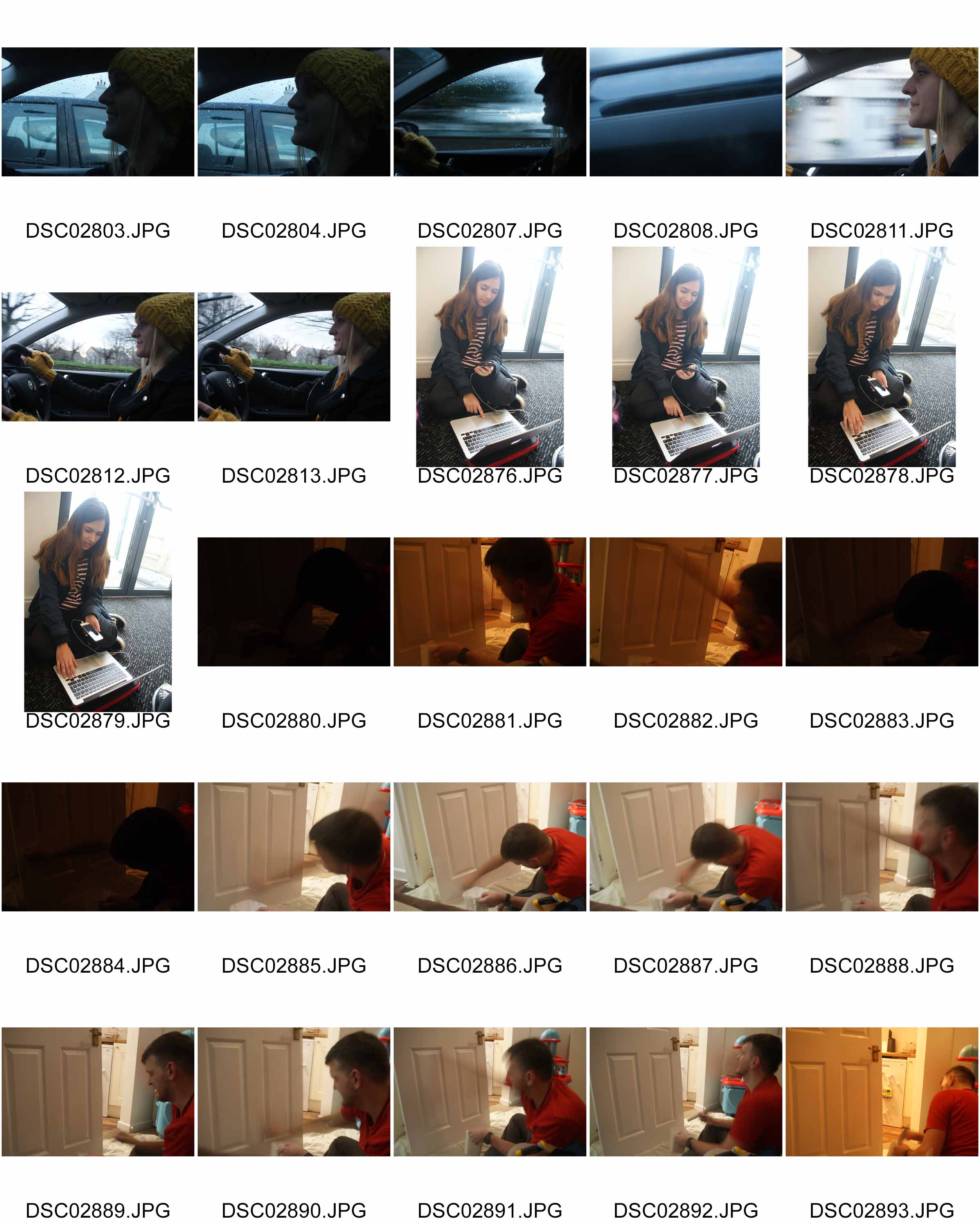
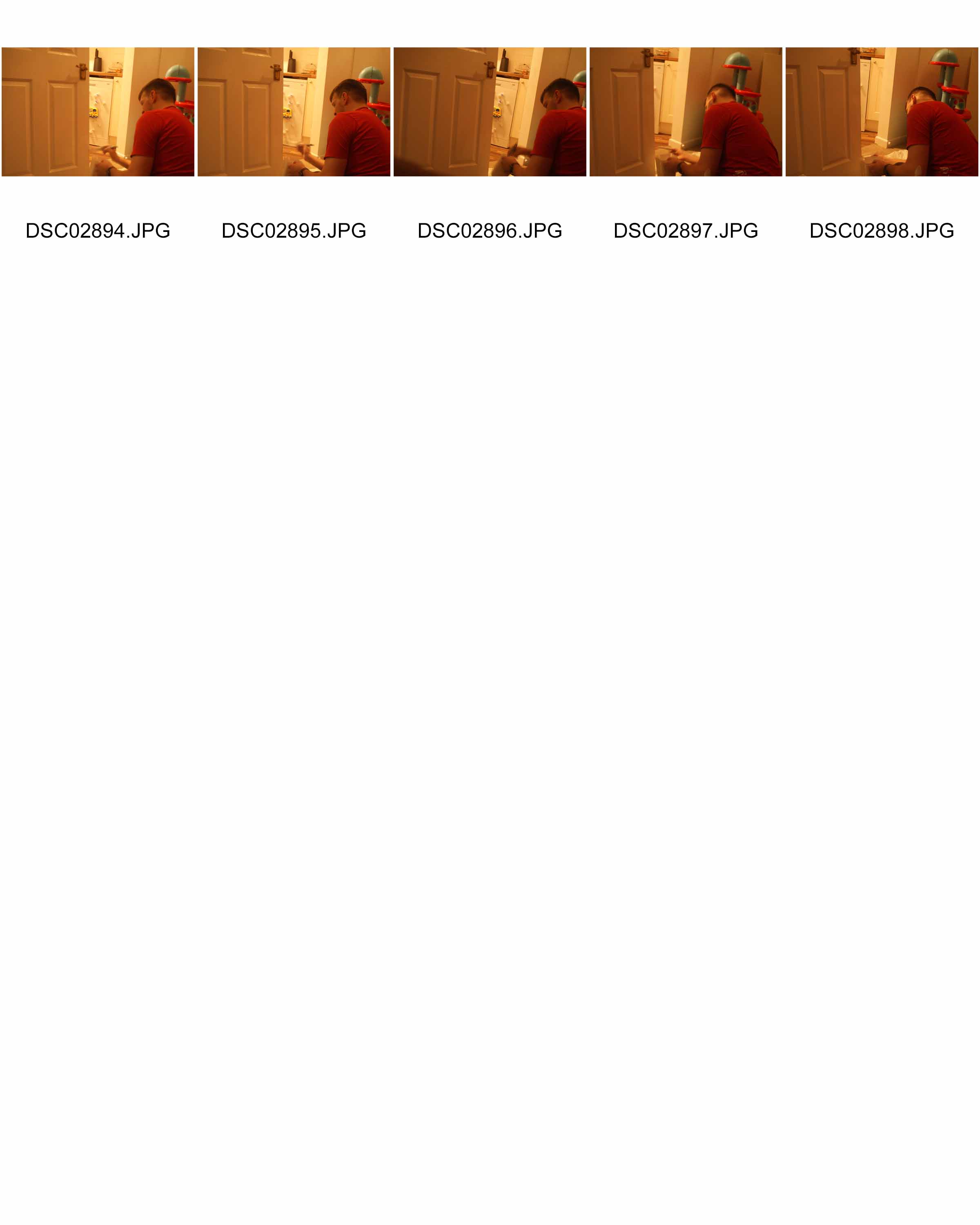
In the images I took, I aimed to get the subjects in their natural environments, doing what they normally do. I got someone driving, someone painting, and another doing their school work. These are all usual tasks which the subjects in the pictures take on in their daily lives.
Chosen best edited images:
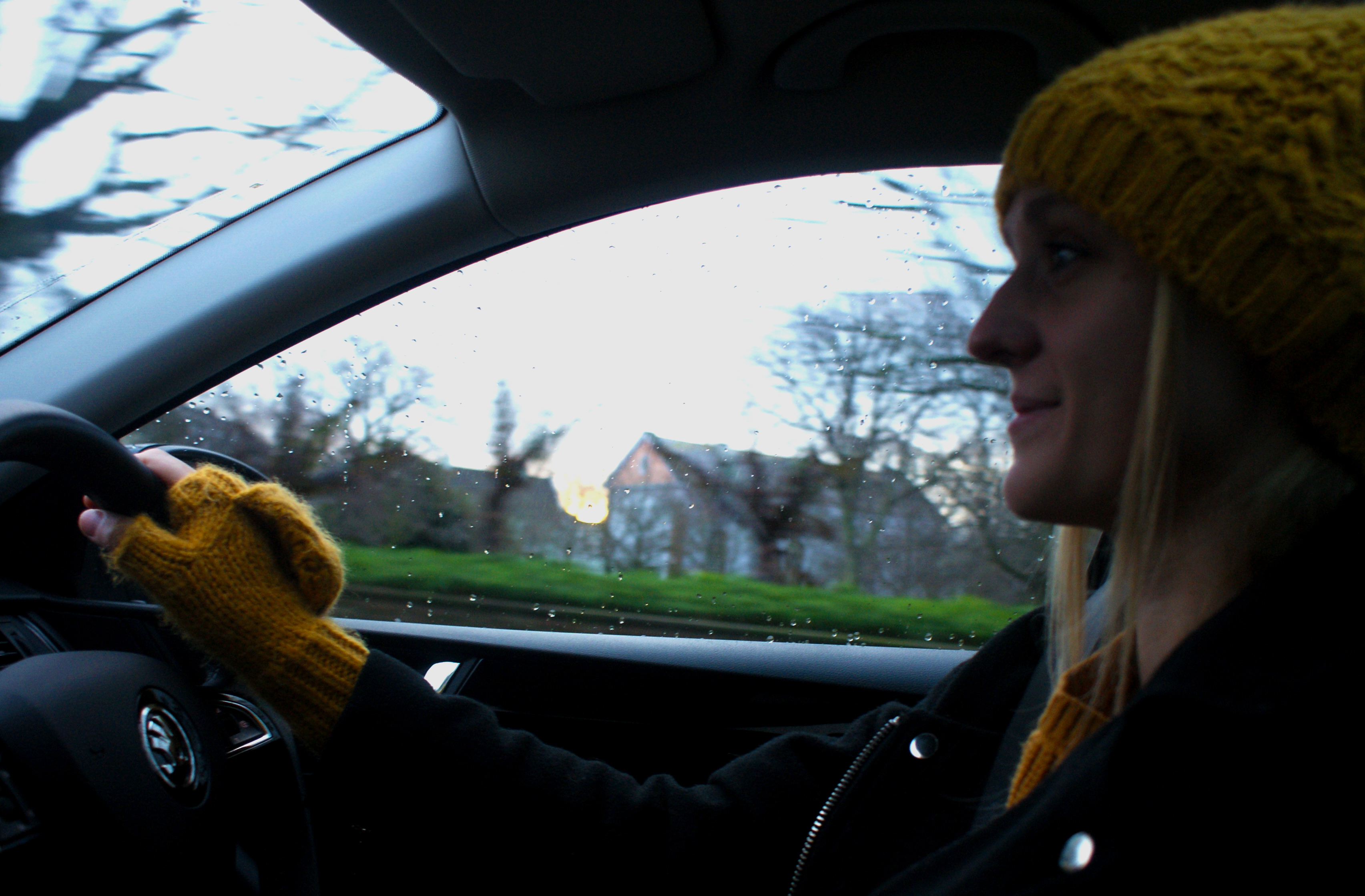

I chose these images because I feel they best represent the idea of environmental portraits out of all the images I took. As you can see in the two images I chose, one is of someone driving and the other is of someone doing their work, both being tasks they do in their daily lives. The fact that they’re turned away from the camera and seem immersed in their tasks adds a bit of reality to it.
Environmental Portraits:
An environmental portrait is a portrait composed in the subject’s usual environment, such as their home or workplace, and usually highlights the subject’s life/lifestyle/occupation and surroundings.
By photographing a person in their natural surroundings, it better displays their character, and therefore portrays the their personality through their interests and usual setting, instead of just a likeness of their physical features. By photographing a person in their natural surroundings, it also allows the subject to be more at ease and comfortable as it is something that is safe to them and they are used to. This allows the subject to be more likely to express themselves easily and accurately, as opposed to in a studio or posed setting, which can be an intimidating and artificial experience, taking away from the elements of a realistic image.
Mood Board:

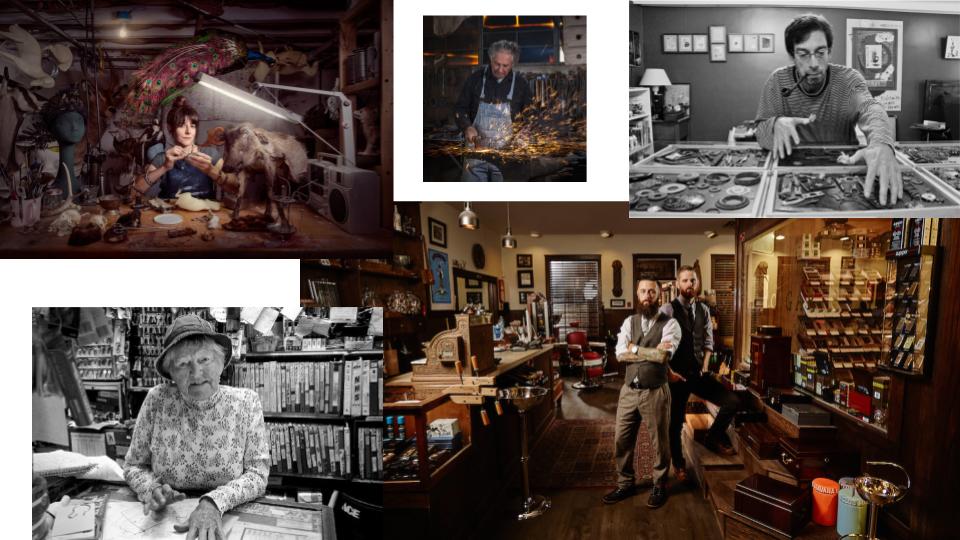
Video/Page Links Below:
https://petapixel.com/2016/04/07/8-tips-making-better-environmental-portraits-natural-light/
